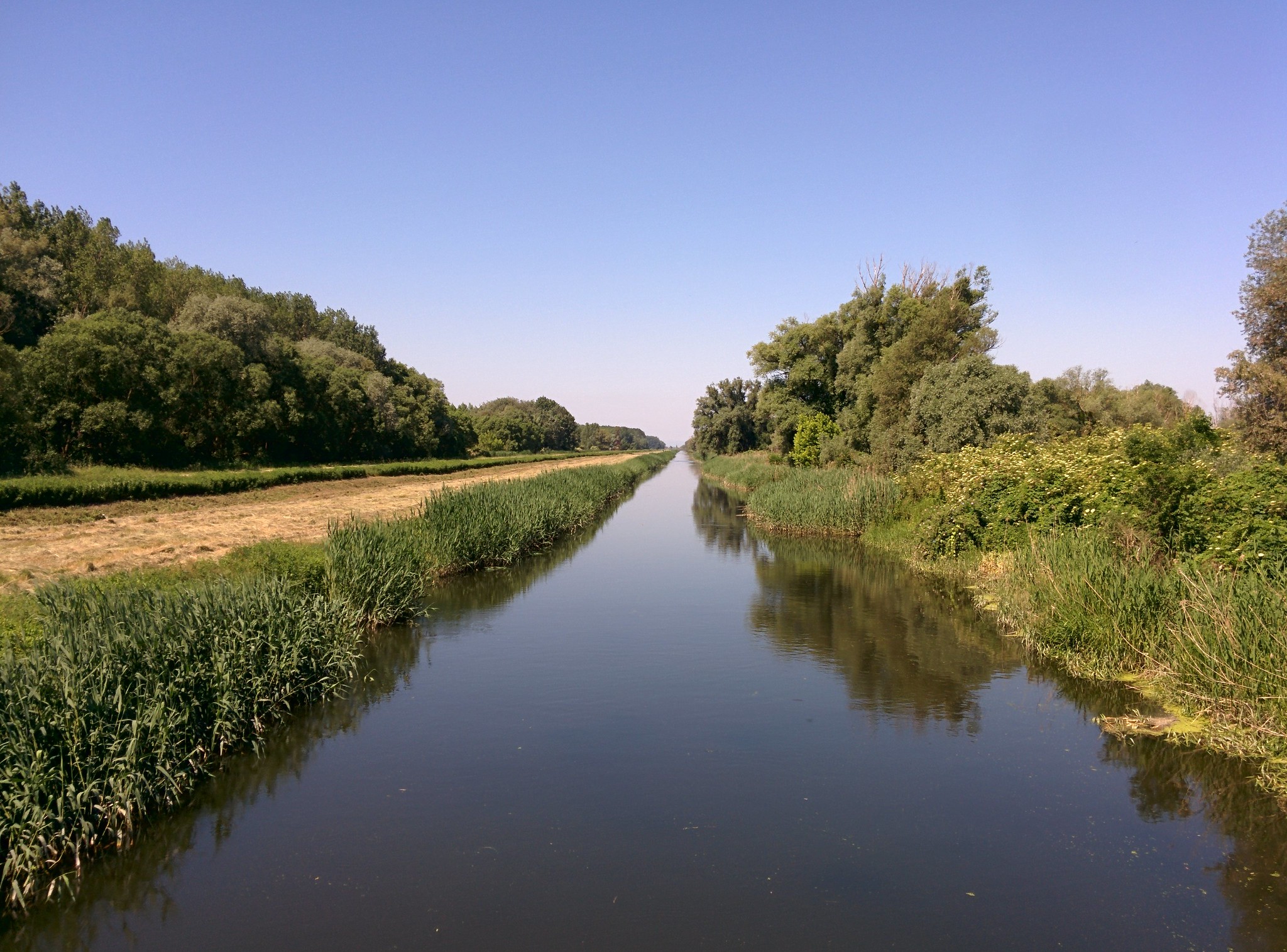Howdy from the last day of 2015! I'm writing this from my parent's house in Pittsburgh Pennsylvania, back in the USA. My family and I are currently in the middle of our move from Ireland to Arizona, so I've been very busy and have not done much birding. But the good news is that I've finally bought myself a new DSLR, a Canon 7d Mkii, which is awesome. I don't have a birding lens yet, but that will be remedied as soon as possible.
I really need to post some photos from my last time in Ireland, but unfortunately, I didn't get out as much as I wanted to, and the weather was plain shite most of the time.
But I'm looking forward to getting this thing kicked into high gear in 2016 with a new look and some quality photos.
Cheers,
Steve
Thursday, December 31, 2015
Saturday, June 13, 2015
Eastern European Trip Day 1: Arrival and White Storks
I was fortunate enough to be able to go on a week-long birding trip to Central Europe with Birdwatch Ireland. It was my first long-birding trip, and the longest time that I would be away from my kids since my daughter was born over five years ago. Myself and 34 other birders would spend 6 hot, sunny days looking for birds in Austria, Hungary and Slovakia from our base in Illmitz. The town is situated within Austria's only steppe nationalpark, Neusiedler See. The area was composed of a very large lake, extensive reed beds surrounding the lake, various smaller, brackish ponds and extensive meadows and farmland. Which put together offered the potential for a variety of bird species to see.
We left Ireland early Tuesday morning June 2nd and landed in Vienna just before lunch. We met our Austrian guide, Leander Khil at the airport and boarded our very large, white motorcoach. Our first stop was to a local cafe in Fischamend for lunch, and my first lifer tick of the trip, a Black Stork circling overhead.
We picked up some other common European species: Common Swifts, Common House-Martins, Carrion Crows, House Sparrows and White Storks sitting atop large, rooftop nests.
Our second stop was a wooded area near Marchegg, just a few hundred meters from Slovakia, and along the March River. This area is special because it's the home of the last tree-nesting White Stork colony in Europe. They've moved onto houses everywhere else. But seeing their nests on trees near an old castle really makes you feel like you are in Europe.
Some of the trees held multiple nests, around 50 in all throughout the surrounding forest.
This tree had 3 levels of nests in it.
And if you look closely to the one in the bottom-most nest, you will see that it never good to be on the bottom of the pecking order.
It wasn't just Storks in the area. I picked up my second lifers of the trip, Collared Flycatcher and Lesser Spotted Woodpeckers, 36 species in total. Unfortunately, we wouldn't see Collared Flycatchers again, and I never got a good photo of one. In addition to the birds, there were quite a few other animals about. Edible Frogs (yes, that's their name) were in the water all around us.
After reaching the town of Illmitz and checking into our home for the next week, we had a nice dinner and started getting to know one another a bit better. But as the day was ending, I noticed my neighbors across the way, a White Stork family.
We left Ireland early Tuesday morning June 2nd and landed in Vienna just before lunch. We met our Austrian guide, Leander Khil at the airport and boarded our very large, white motorcoach. Our first stop was to a local cafe in Fischamend for lunch, and my first lifer tick of the trip, a Black Stork circling overhead.
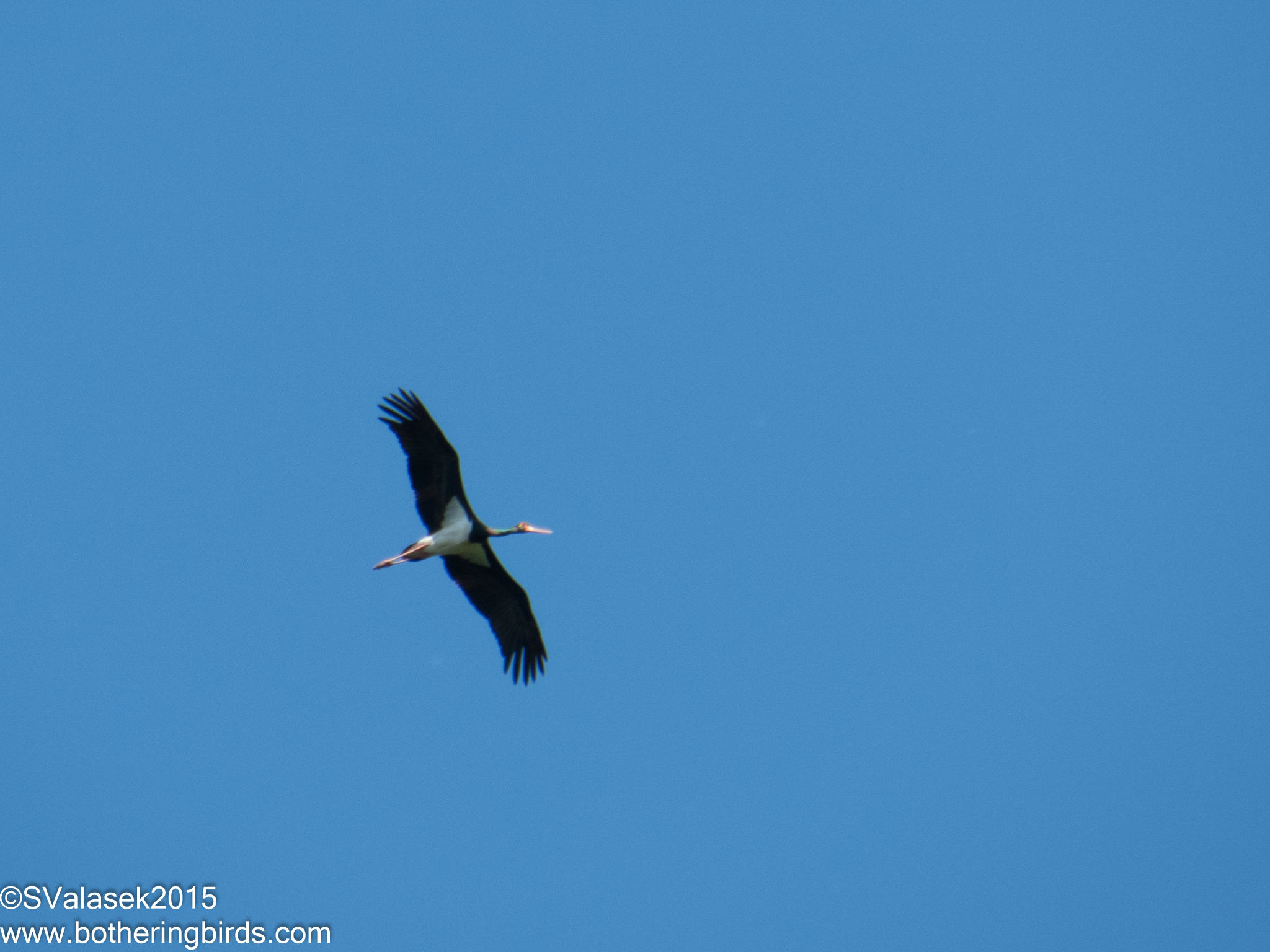 |
| Black Stork - Austria |
Our second stop was a wooded area near Marchegg, just a few hundred meters from Slovakia, and along the March River. This area is special because it's the home of the last tree-nesting White Stork colony in Europe. They've moved onto houses everywhere else. But seeing their nests on trees near an old castle really makes you feel like you are in Europe.
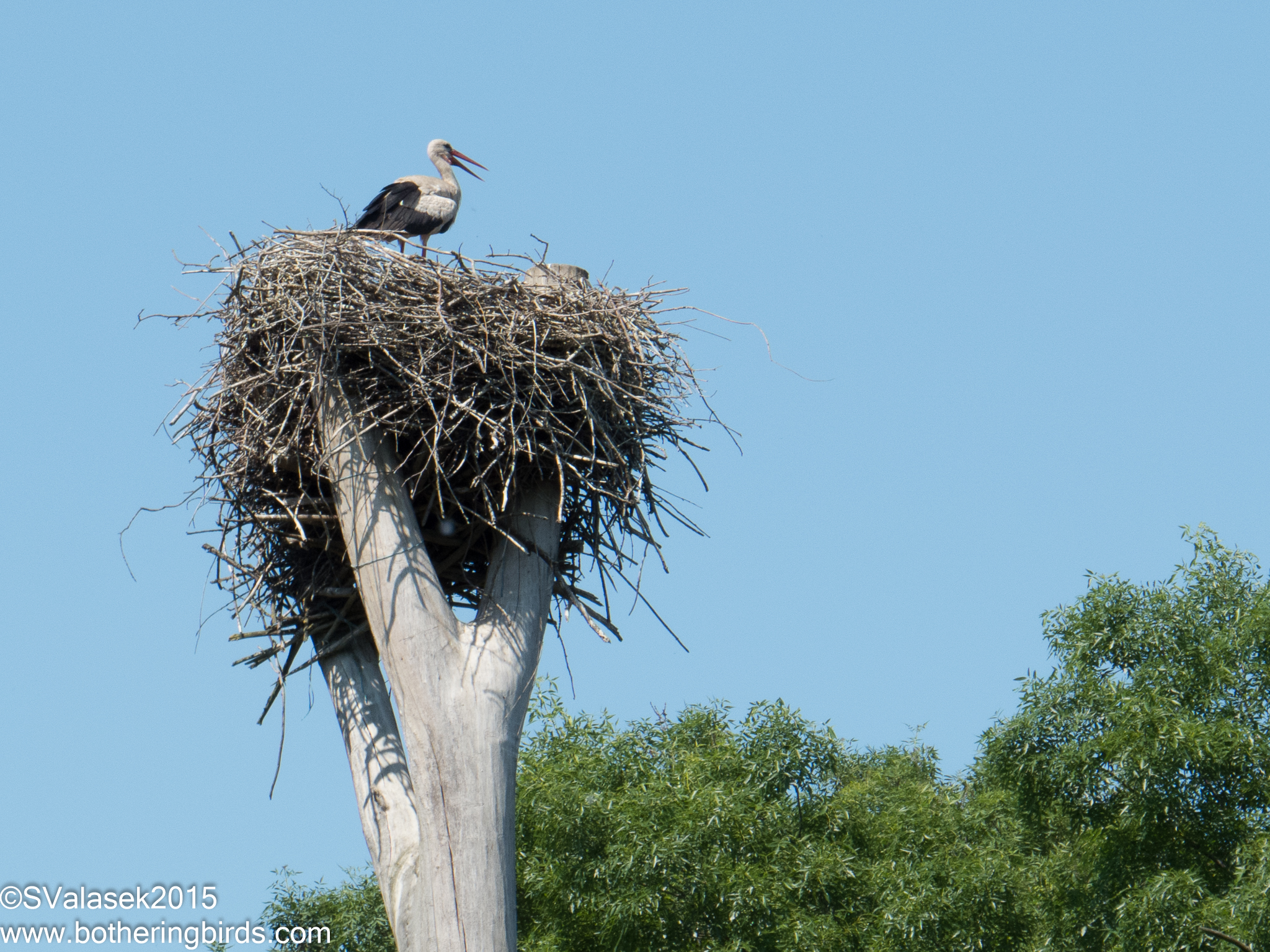 |
| White Stork Nest - Marchegg, Austria |
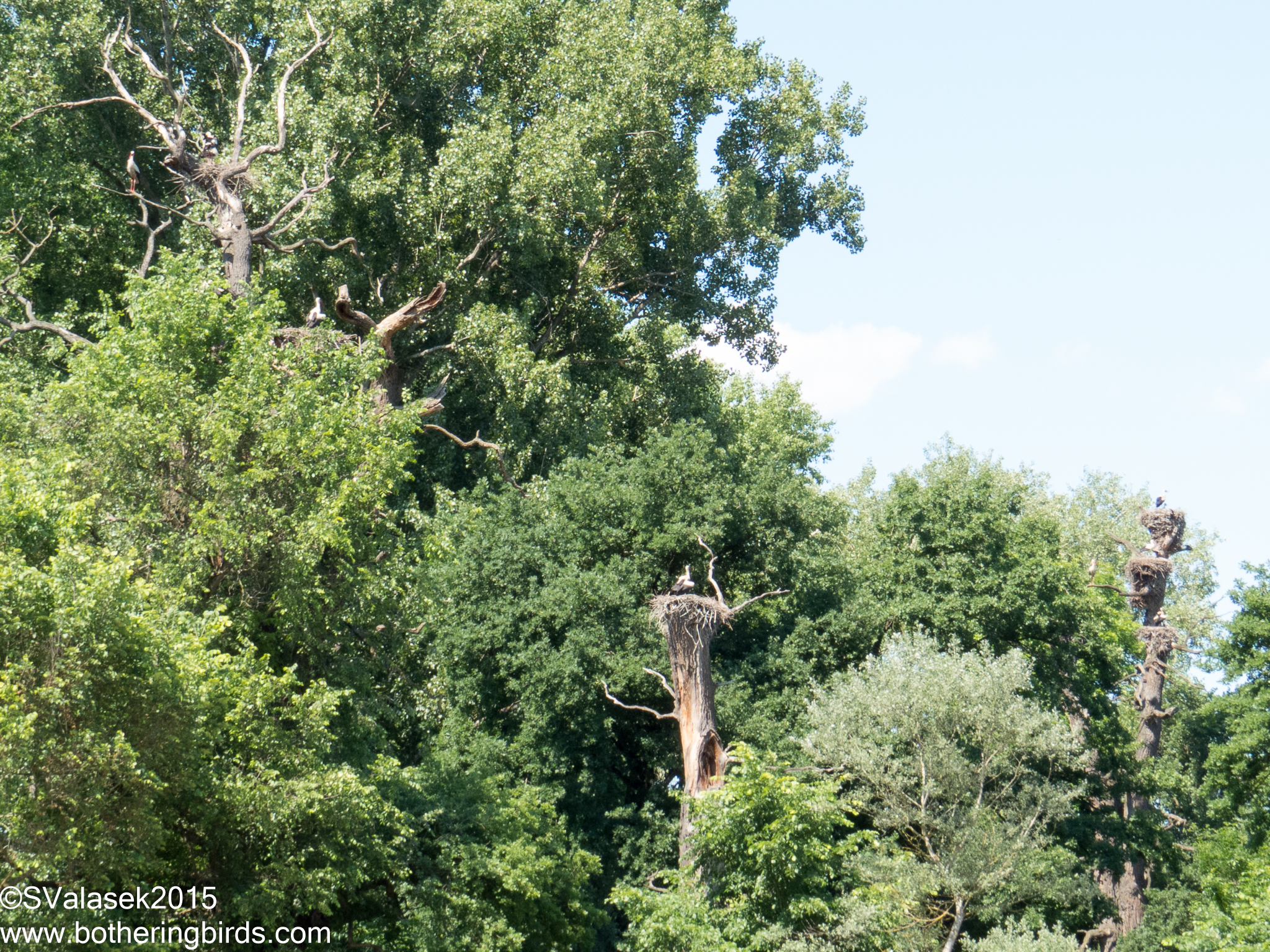 |
| White Stork nests - Marchegg, Austria |
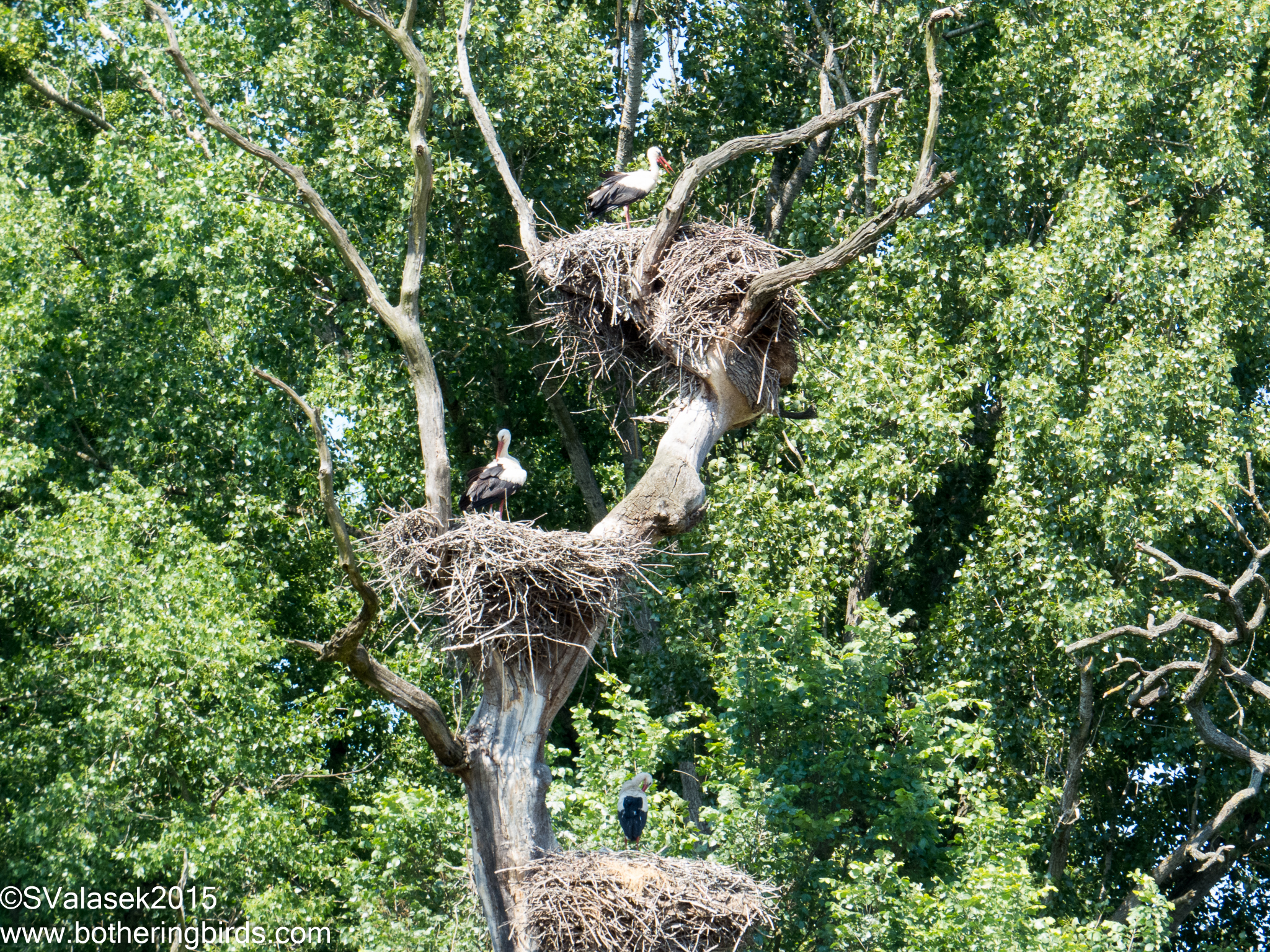 |
| White Storks - Marchegg, Austria |
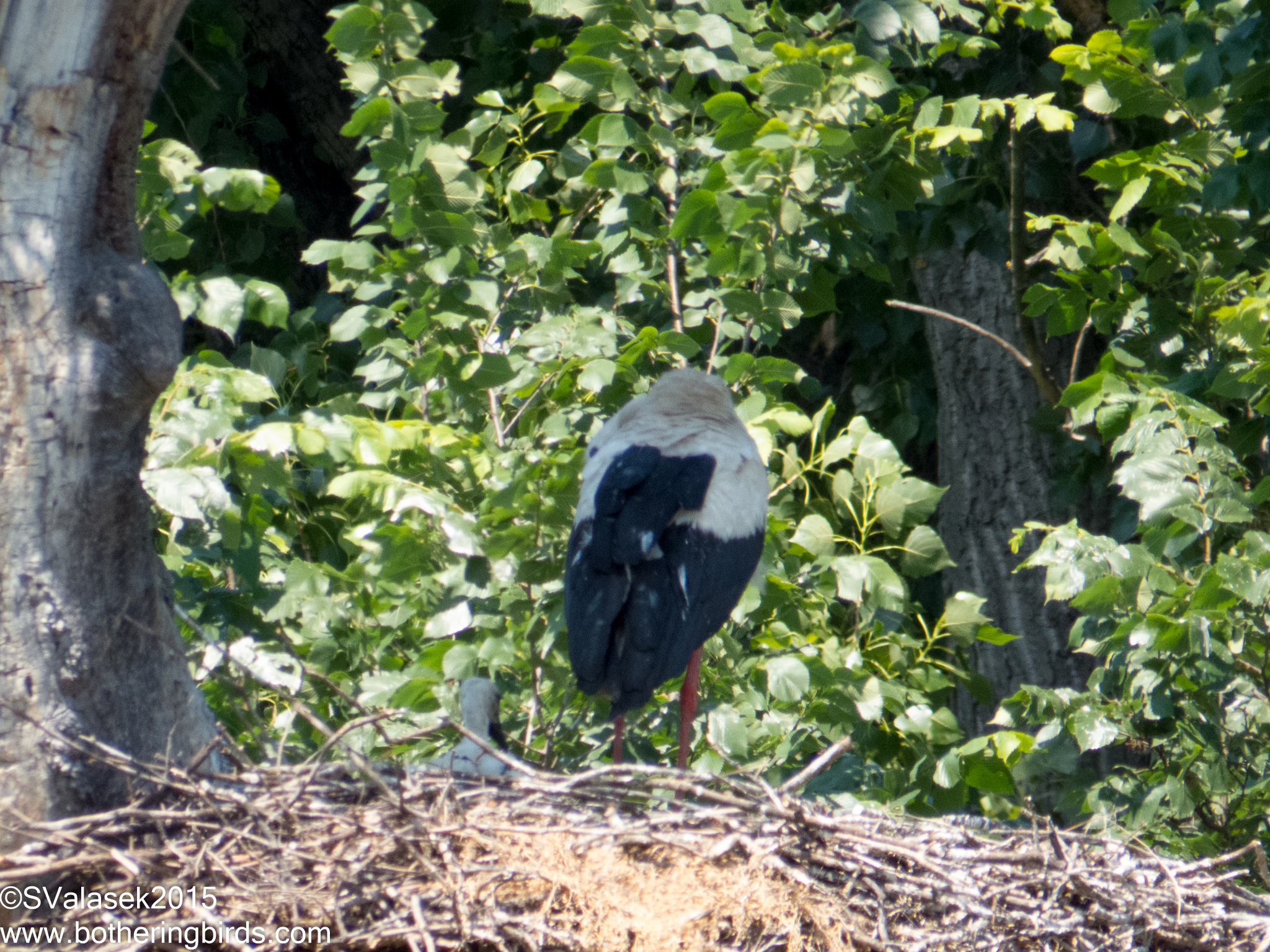 |
| White Stork - Marchegg, Austria |
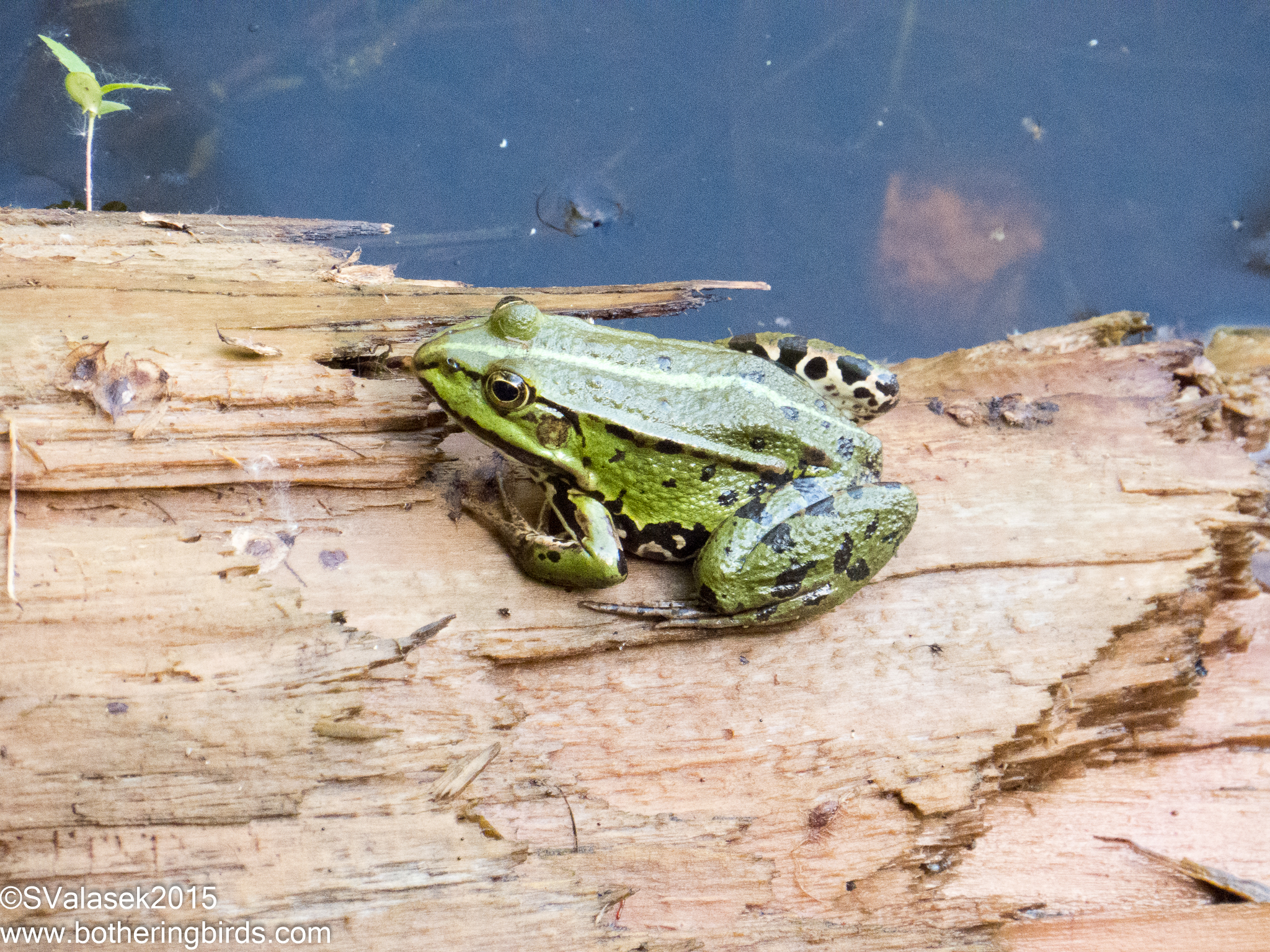 |
| Edible Frog - Marchegg, Austria |
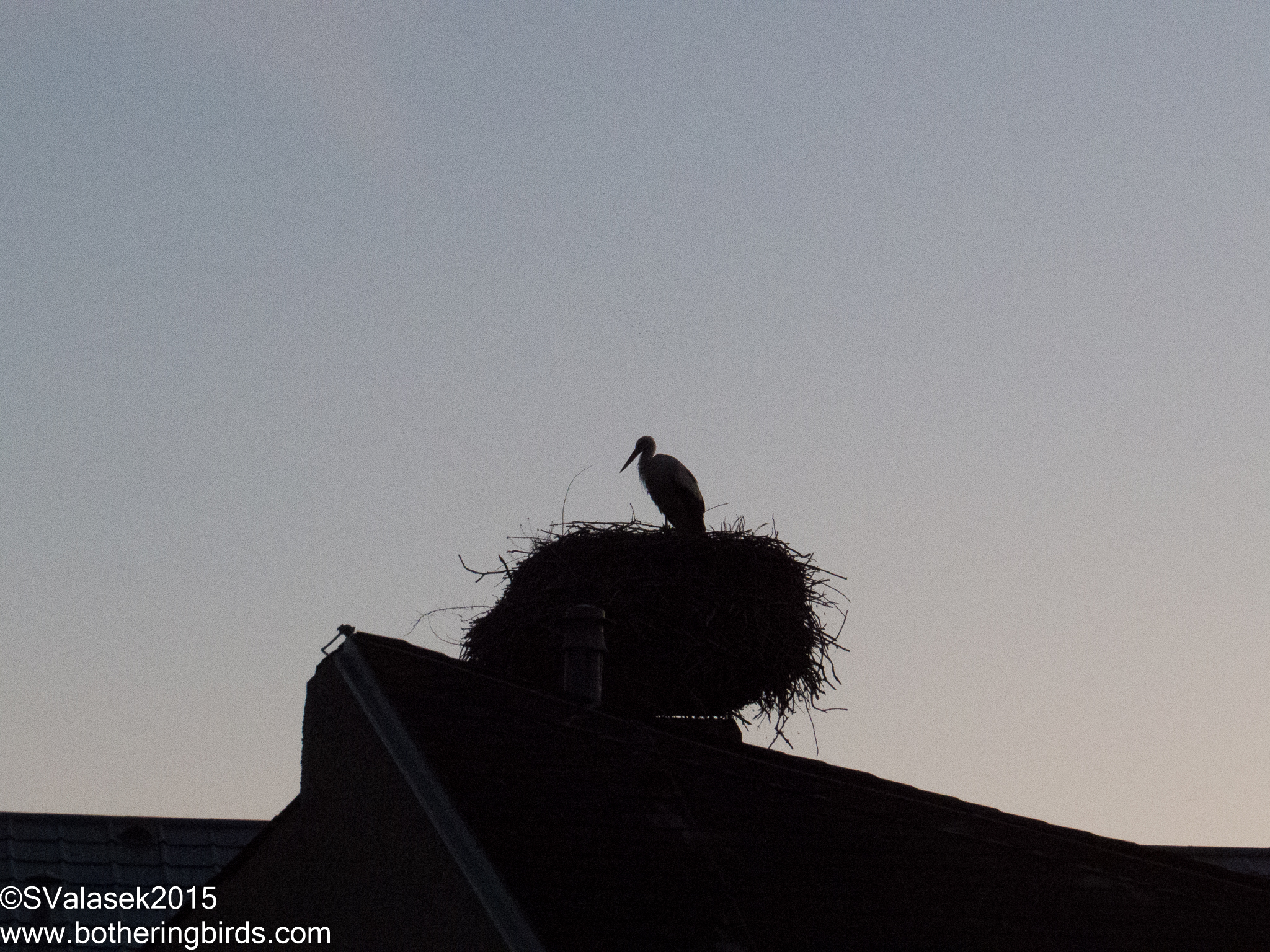 |
| White Stork - Illmitz, Austria |
I'll be making each day it's own post since we would concentrate on a particular area, and thus get some different birds each day.
Cheers.
(I have changed the posting dates of these posts so that they are shown with day 1 first, etc, so that you can read them in order)
(I have changed the posting dates of these posts so that they are shown with day 1 first, etc, so that you can read them in order)
Friday, June 12, 2015
Eastern European Trip Day 2: Reed Beds, Salt Ponds and Hoopoes
I wrote about the first day of my recent trip to Austria in the previous post, which you can find here.
The second day would take us to various salt ponds and reed-beds in the Nuesiedler See Nationalpark, which surrounded Illmitz, Austria, the town in which we were staying. In the morning we boarded our White-Whale of a motor coach and went to visit two places with interesting names: Oberstinkersee, or the "big stinky lake", and nearby Hölle, or "hell". The first was a rather large pond with lots of waterfowl present. We would see Common and Red-Crested Pochards, Mallards, Great Egrets, Mute Swans, Northern Shovelers, Garganey and Little Egrets. But a bird that caused lots of excitement for our local guide, Leander Kihl, was a Fieldfare. This Fieldfare was seen taking food towards a nest, and made this only the second record of nesting in the region.
While on our way to get some very good looks at a Greater Reed-Warbler from one of the multiple hides and observation platforms in the area, someone noticed an odd living arrangement in a rather large birdhouse.
If you look closely, you can see a Kestrel chick peaking out of the one door and Tree Sparrows just around the corner. Some of us speculated that maybe the sparrows were breeding Kestrels that would think of sparrows as family and thus leave them alone.
We left the Oberstinkersee and continued on just a short distance to a section of the reed beds which surround the Nuesiedler See. The motor coach dropped us at a large tower and we walked north along a road with fields and trees to our right and the reeds to our left. We saw dozens and dozens of Red-Crested Pochards and a hundred-odd Graylag Geese in the middle of their molt. I would pick up a lifer Nightengale singing away in a thick piece of brush, while hearing a few others. I also got my first glimpse of Bearded Reedlings out in the reeds, but no good photos. We ended our walk with a view of the lake and some local horses who were helping to control the grasses.
After a lunch stop back at the Hotel Post in Illmitz, we went West towards more reeds and a walk to a bit of water where we should be able to see Pygmy Cormorants. As I mentioned before, it was very hot, nearly 35°C that afternoon and the walk was 2.5km along an exposed, dirt road. It really made me home-sick for New Mexico. The first birds that we saw off of the bus was another Red-Backed Shrike hunting from some kind of pole. We would see Marsh Harriers, Storks, Spoonbills, Tree Sparrows and some Eurasian Kestrels along the way. And more than once we would hear the booming calls of Bitterns from dense reeds, but never saw any.
At the end of the road was a house and an observation tower known as Sandeck. There were some other photographers already there and it seemed to be a popular spot. One of the reasons is that this area is the home of a rare breed of white donkeys, some of the last ones in Austria.
However, opposite of the donkeys was a flurry of activity. Lots of ducks and Graylag geese were on the water and the surrounding wetlands. We saw Pintails, Mallards, Common and Red-Crested Pochards, Gadwalls, Garganey, Shelducks and even some Northern Shovelers. There were also Mute Swans, Great Egrets and Little Egrets present too. And flying far out and back and forth were some Pygmy Cormorants. Everything of interest was too far for my camera, but the scene was impressive.
After we had our fill of the waterfowl, we were told to look into one of the trees behind us. Up on a nest was a Long-Eared Owl.
But the reason that the other photographers were around was because of a different nest. There were Hoopoes nesting in the area. We would watch the adults fly into trees and then fly off. But the one was up in the roof of a building along the dirt road which we had just walked down. Once we had it in our scopes it was easy to see two young Hoopoes looking for their next food delivery.
On the long, hot walk back to the bus we got some good looks at a Turtle Dove in a tree and then a (Black-Crowned) Night Heron flew over towards the lake proper. And just as we arrived back at the Seegasse we saw more Hoopoe adults carrying food back along the road. We figured that they were the adults from the nest that we had seen, but when we watched them quickly flying back going the other way we, figured that there were 2 nests in the area.
The second day would take us to various salt ponds and reed-beds in the Nuesiedler See Nationalpark, which surrounded Illmitz, Austria, the town in which we were staying. In the morning we boarded our White-Whale of a motor coach and went to visit two places with interesting names: Oberstinkersee, or the "big stinky lake", and nearby Hölle, or "hell". The first was a rather large pond with lots of waterfowl present. We would see Common and Red-Crested Pochards, Mallards, Great Egrets, Mute Swans, Northern Shovelers, Garganey and Little Egrets. But a bird that caused lots of excitement for our local guide, Leander Kihl, was a Fieldfare. This Fieldfare was seen taking food towards a nest, and made this only the second record of nesting in the region.
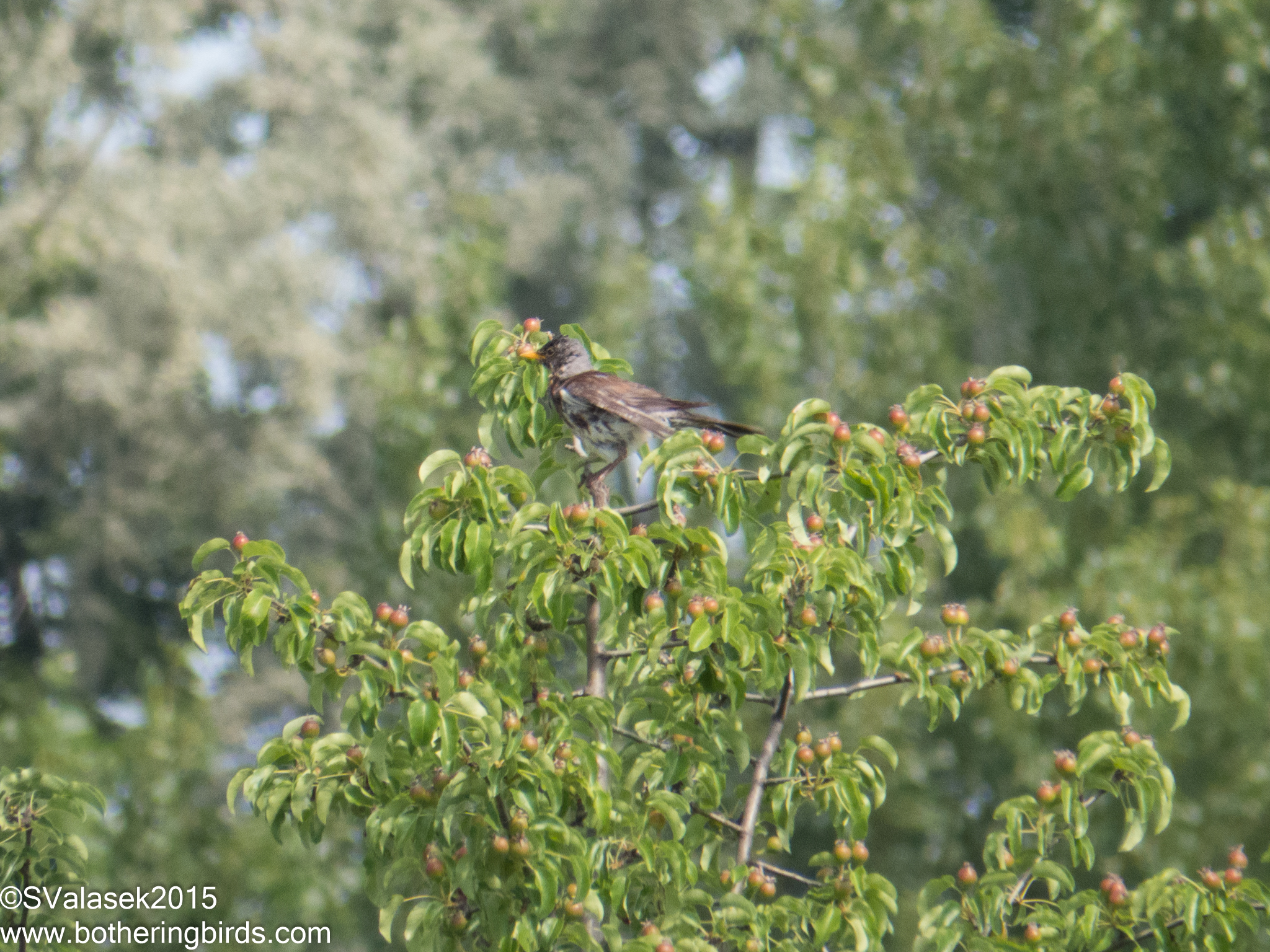 |
| Fieldfare - Oberstinkersee, Austria |
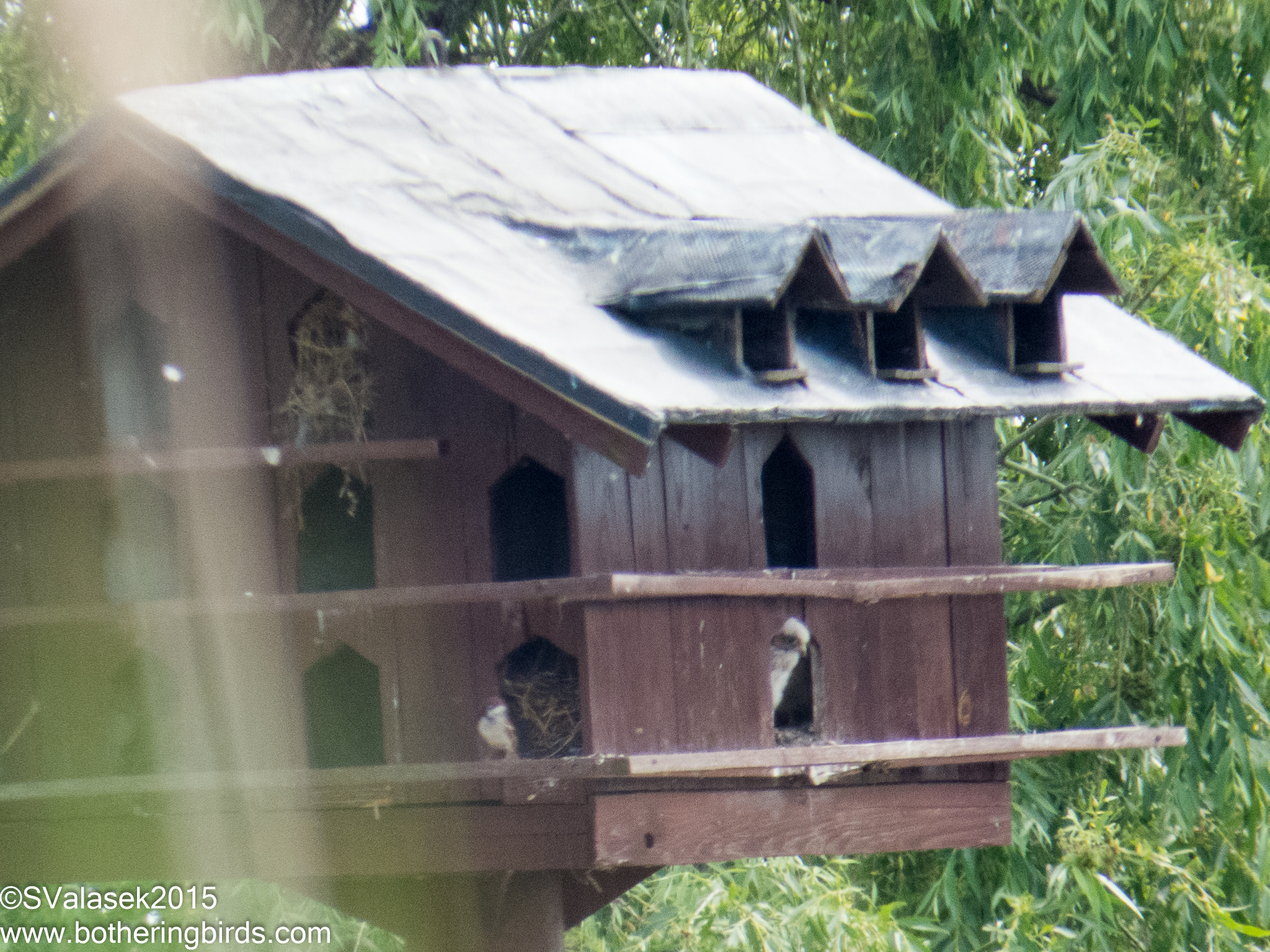 |
| Eurasian Kestrel Chick and Sparrows - Oberstinkersee, Austria |
One of the lifer ticks for me on the second day would become a common bird seen throughout the week, Red-Backed Shrikes. We would see them singularly or in pairs pretty much everywhere else that we visited for the remainder of the week.
 |
| Red-Backed Shrike - Oberstinkersee, Austria |
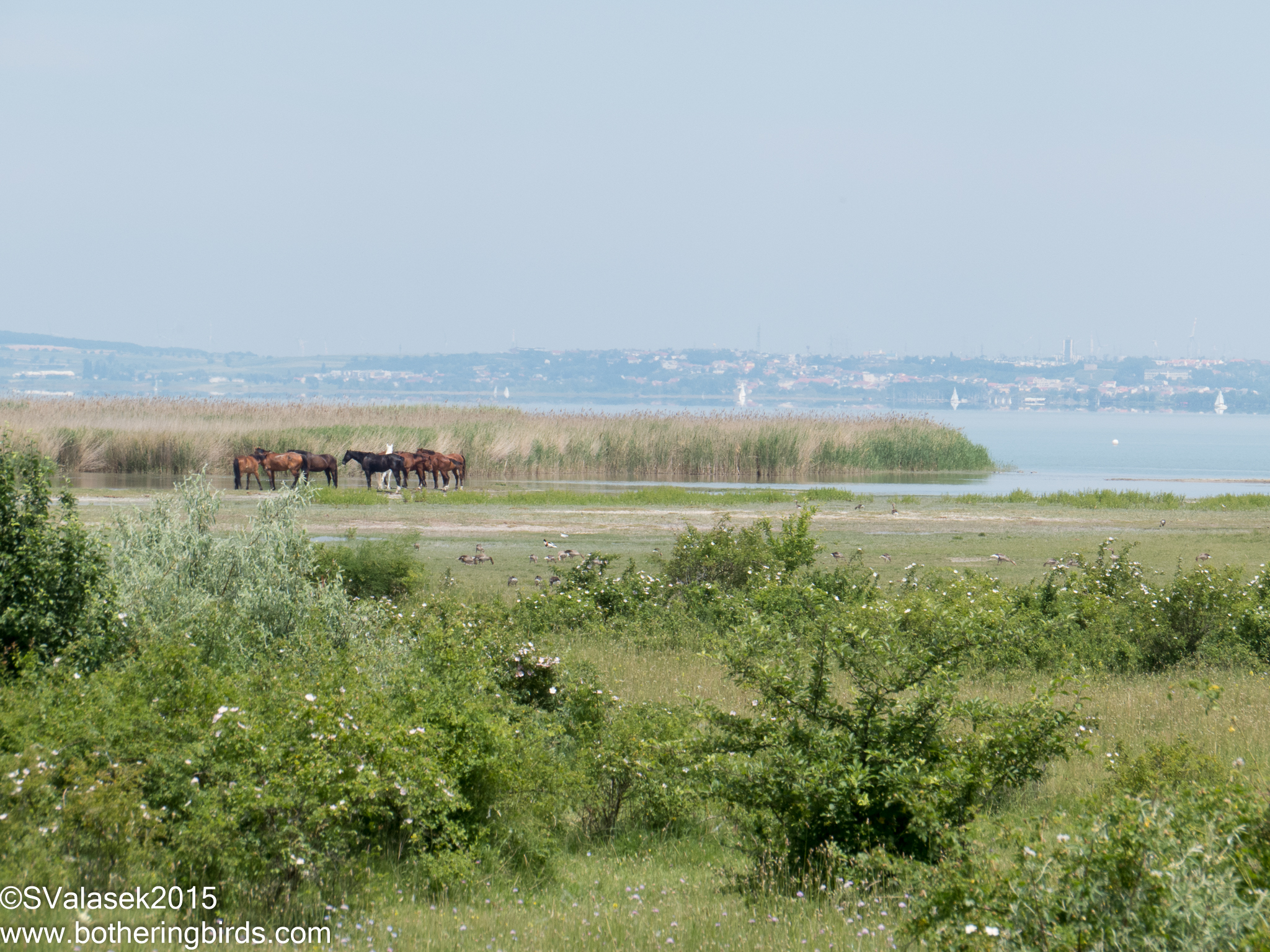 |
| Nuesiedler See - Illmitz, Austria |
At the end of the road was a house and an observation tower known as Sandeck. There were some other photographers already there and it seemed to be a popular spot. One of the reasons is that this area is the home of a rare breed of white donkeys, some of the last ones in Austria.
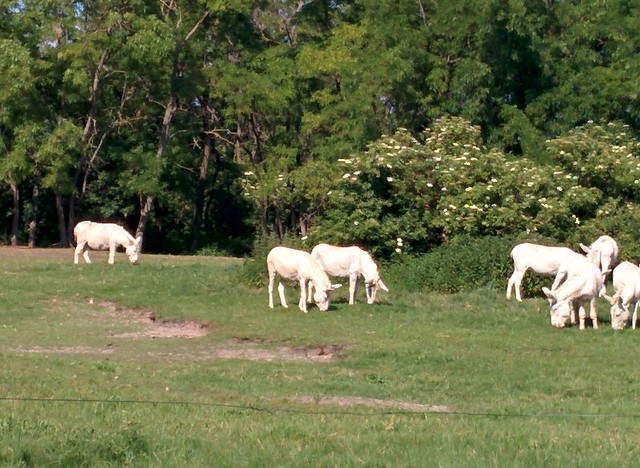 |
| Austrian White-Donkeys - Illmitz, Austria |
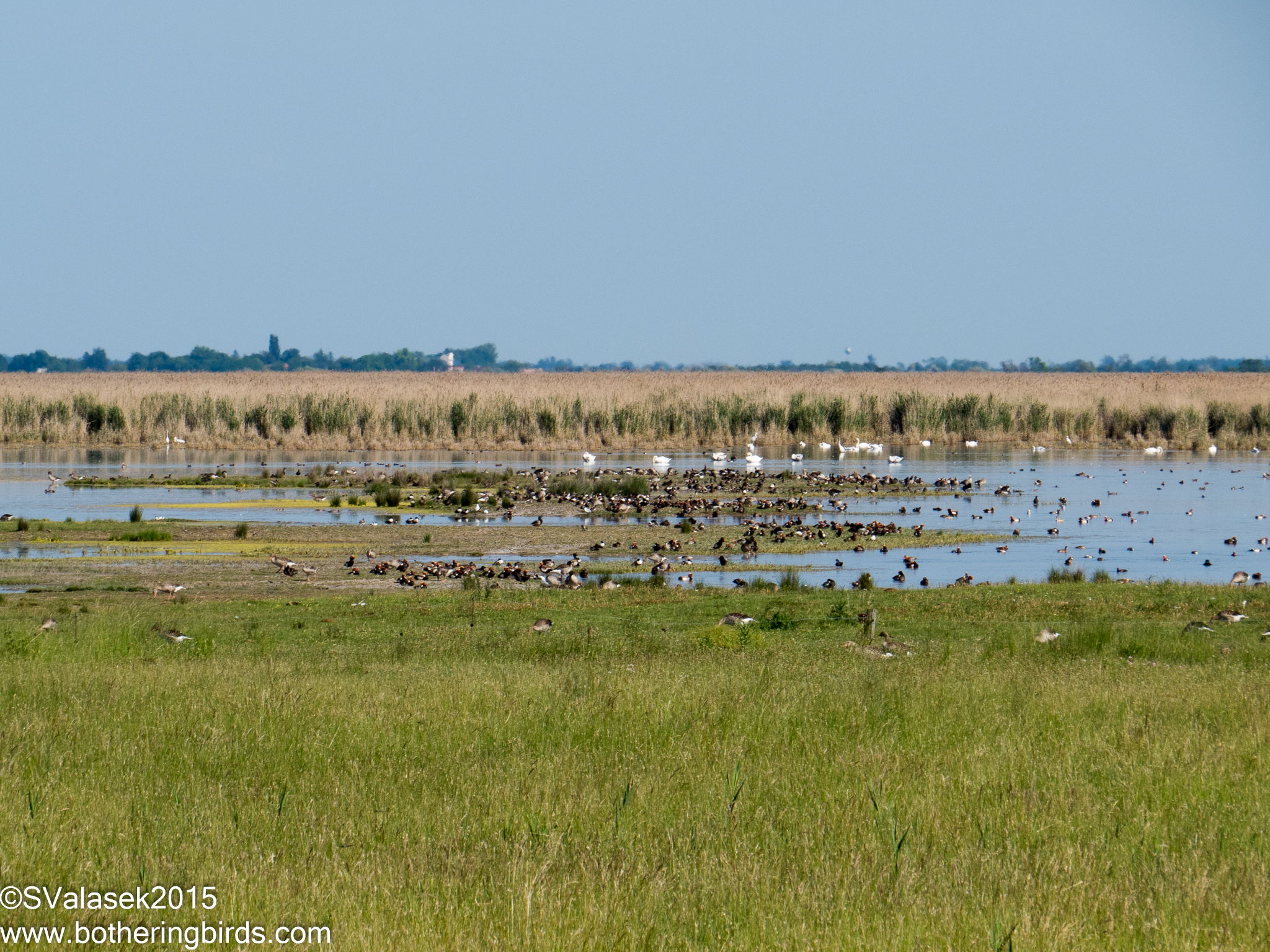 |
| Scene from Sanddeck - Nuesiedler See, Austria |
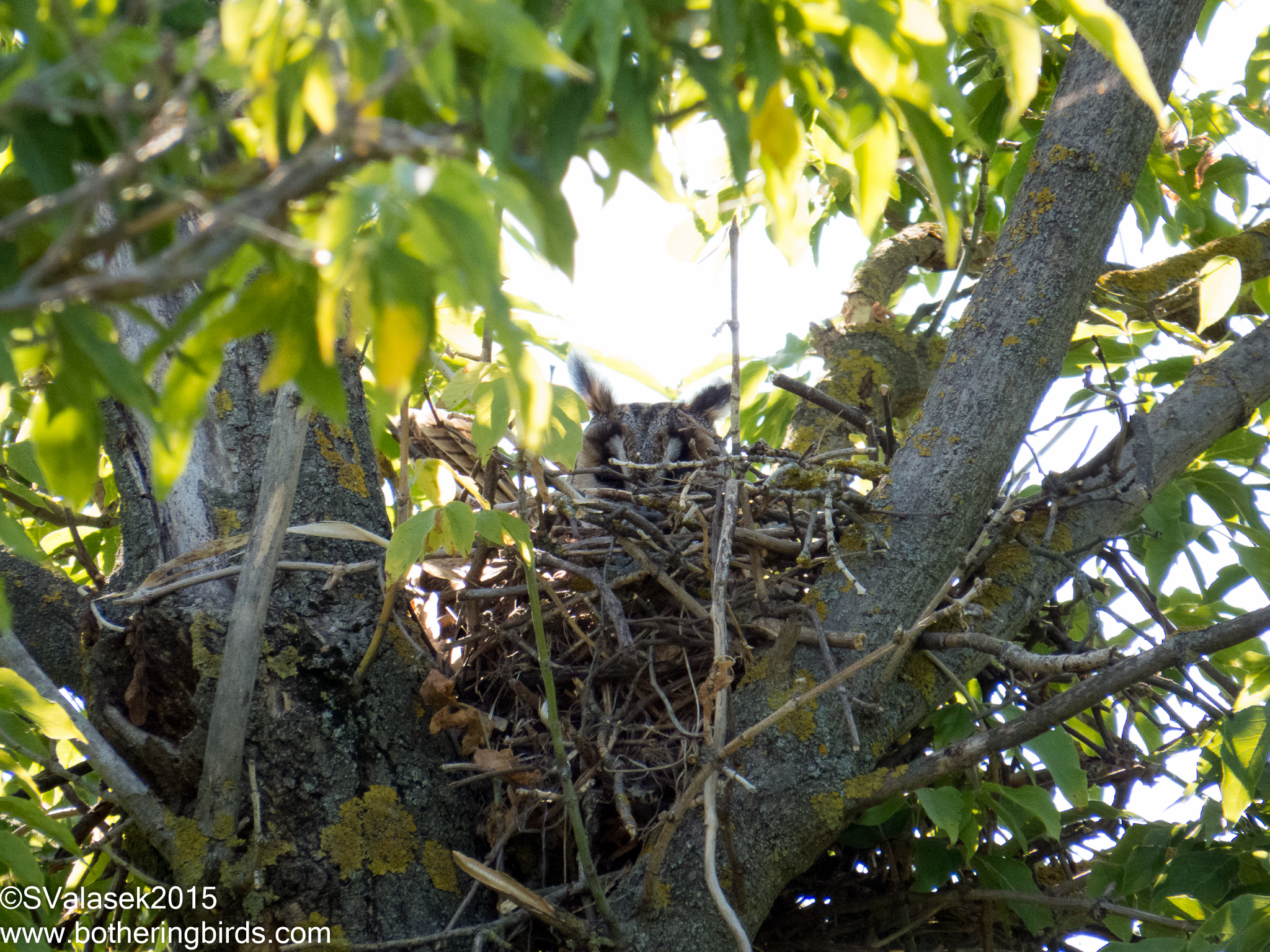 |
| Long-Eared Owl - Nuesiedler See, Austria |
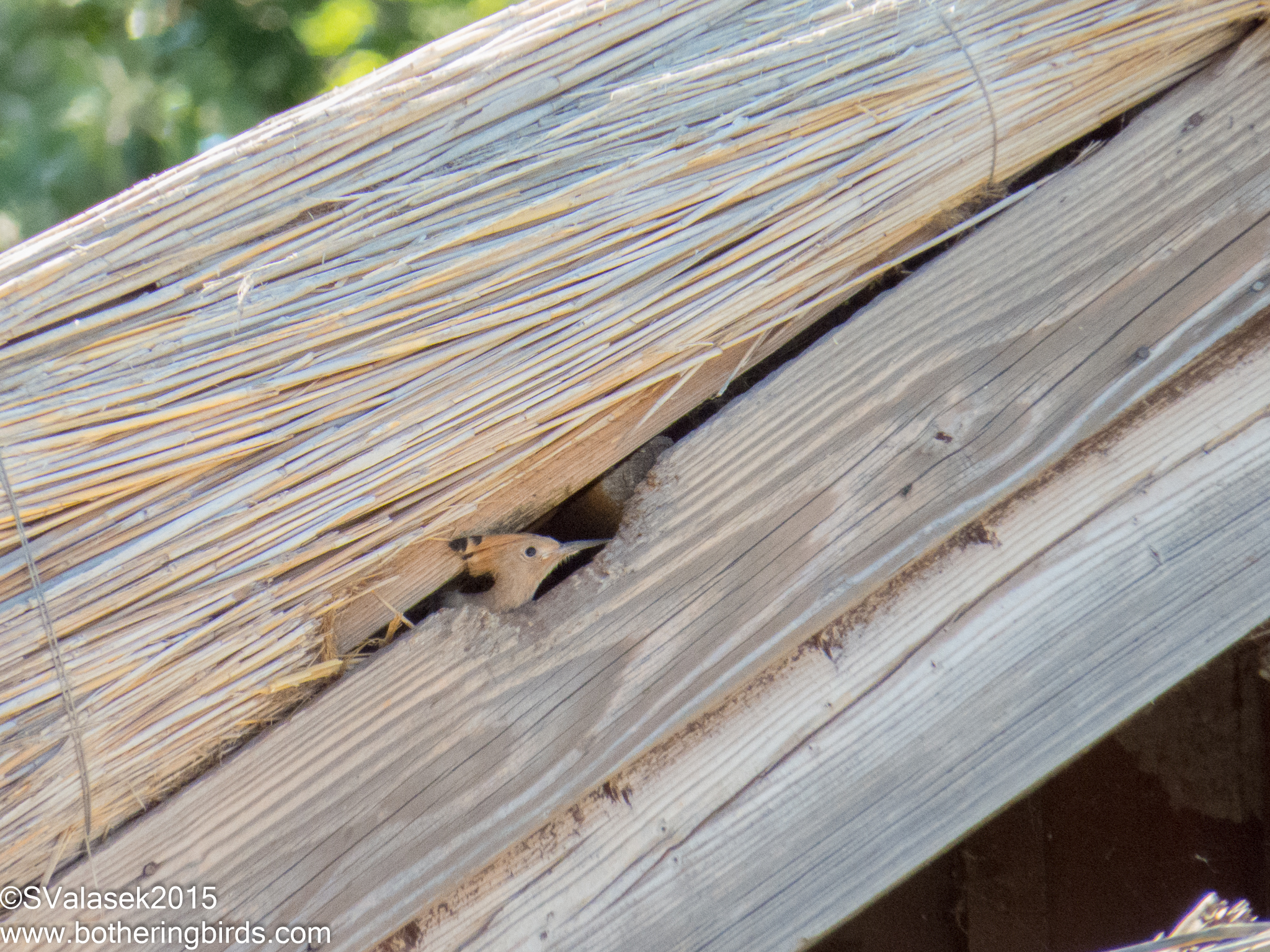 |
| Hoopoe chick - Nuesiedler See, Austria |
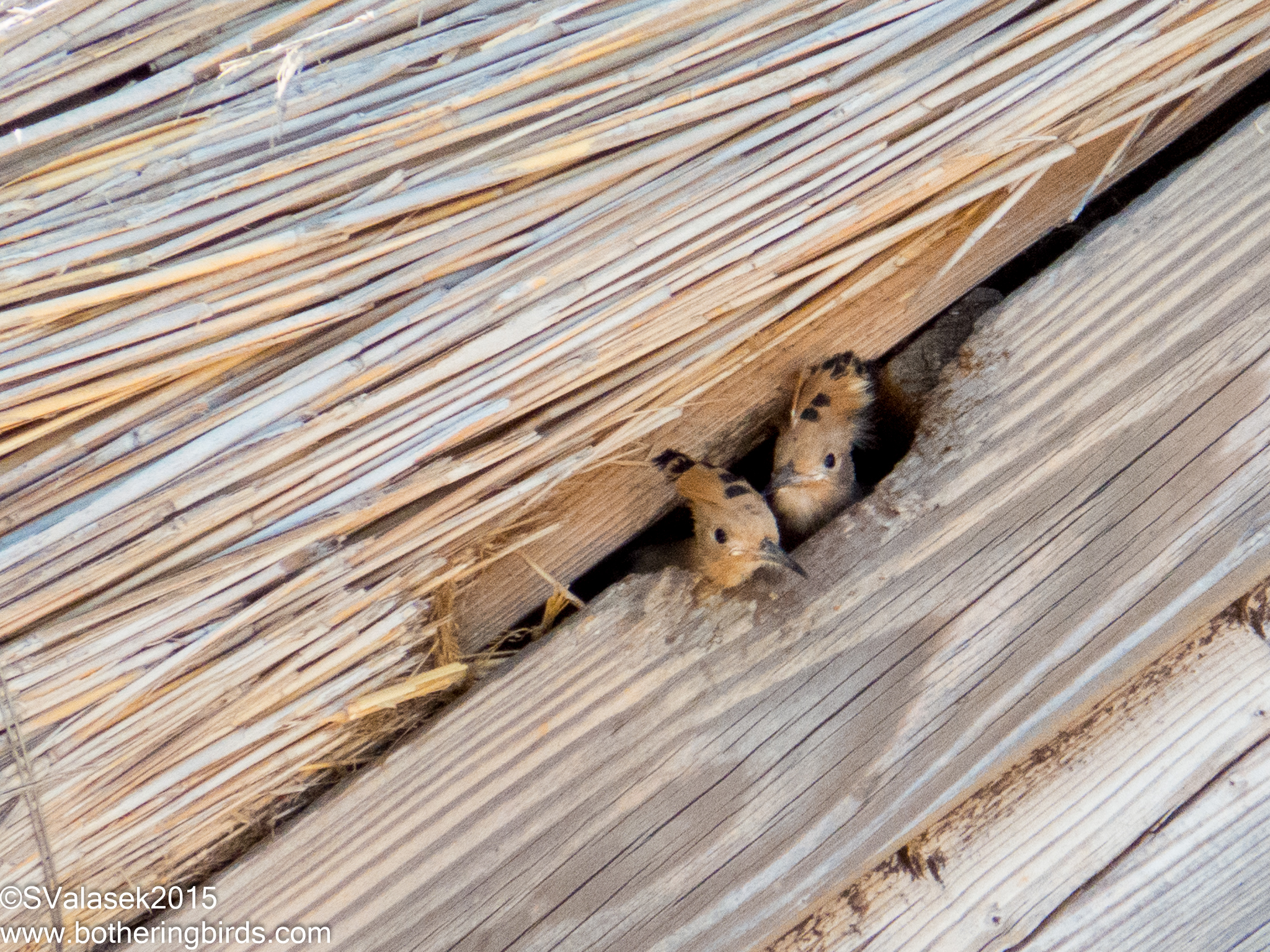 |
| Hoopoe Chicks - Nuesiedler See, Austria |
The end of the second day saw me get a quite a few lifer ticks, 17 in all and nearly half of the ones that I would see during the week. But I would get better looks at most of those later in the week, and better photos too. Day three would be taking us East towards Hungary looking for Great Bustards and Bee-Eaters.
Cheers.
Thursday, June 11, 2015
Eastern European Trip Day 3: Great Bustards, Hungary and a Harrier
This is the third post about my recent trip to Austria, Hungary and Slovakia with Birdwatch Ireland. You can find my previous posts on day 1 here, and day 2 here.
The third day's goals were Great Bustards in the morning and then our visit to Hungary. We left our base at the Post Hotel Illmitz and traveled East towards Hungary. The town of Illmitz is known for it's wine making and is surrounded on all sides by vineyards. But as we traveled East we left the grape vines behind for fields of different crops. Although I had seen Great Bustards in Portugal, I was looking forward to seeing them again. Leander. our Austrian guide, told us that due to really wet and cold weather the previous week, the Bustard nests were lost. So there was a chance that we could see males strutting in attempt at a second brood.
Someone spotted two Great Bustards out in a cleared field, which isn't hard, they are the world's heaviest flying bird,
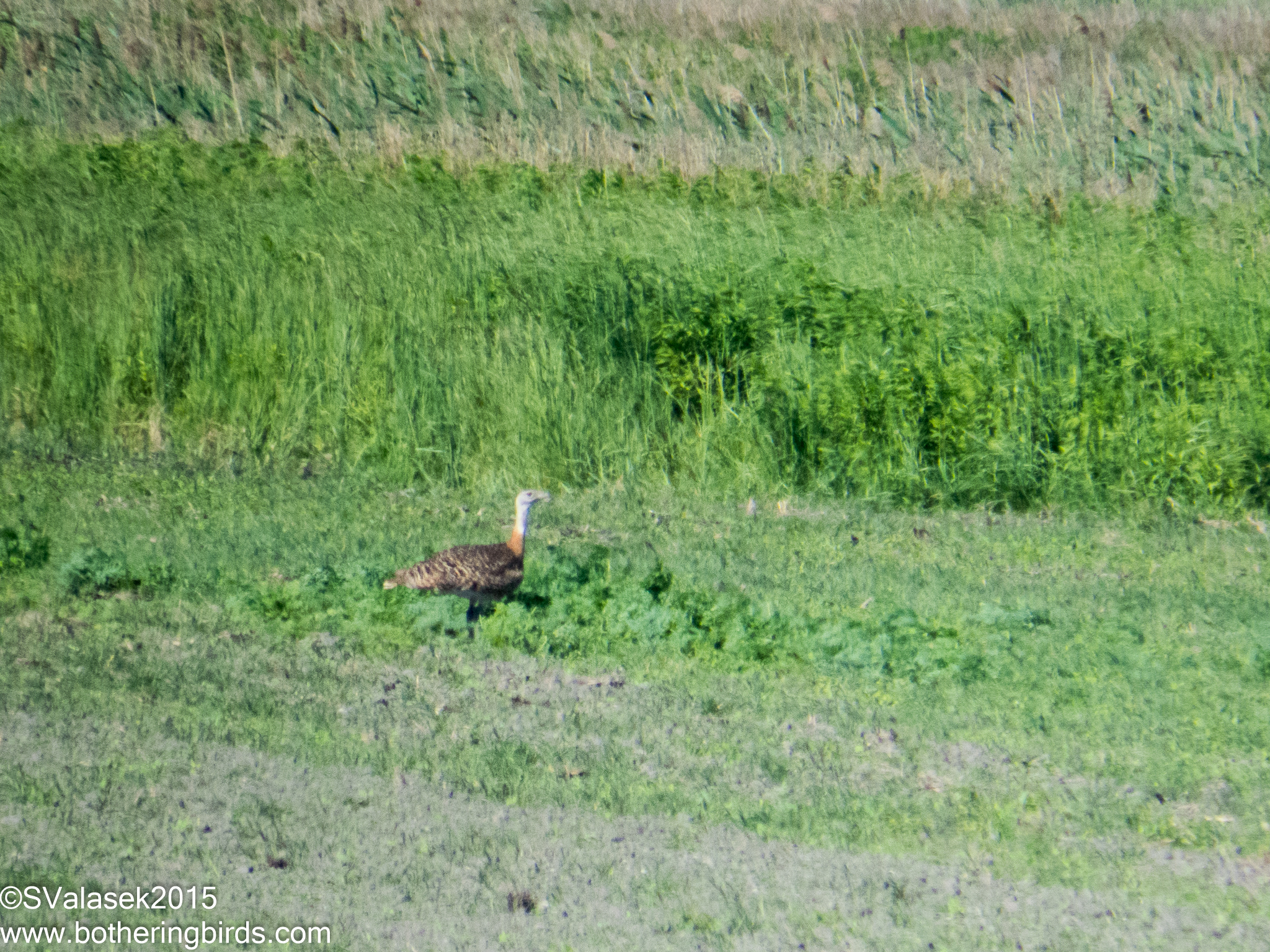 |
| Great Bustard - Burgenland, Austria |
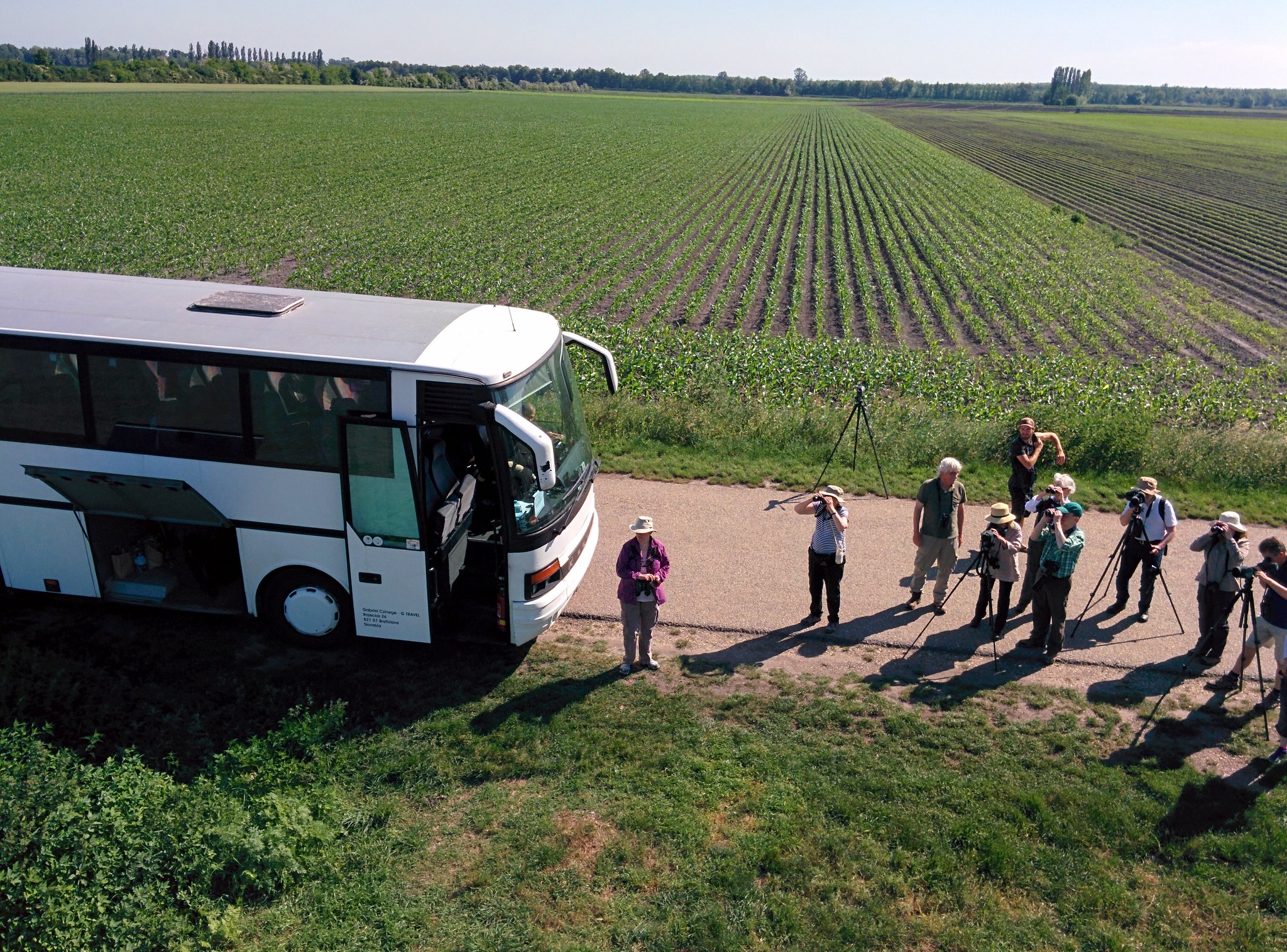 |
| Irish Birders - Burgenland, Austria |
Our next stop was a few miles further East on the border between Austria and Hungary at the Andau Bridge. The bridge was the scene of a mass exodus of refugees during the soviet crack-down of 1956. When the Iron Curtain was raised all of the border crossings were closed. But a small bridge was forgotten and 70,000 Hungarian refugees used it to escape to the West until it was destroyed by the Soviet military. Today the recently restored bridge is a peaceful spot and the road to Andau is lined with a series of sculptures commemorating the event.
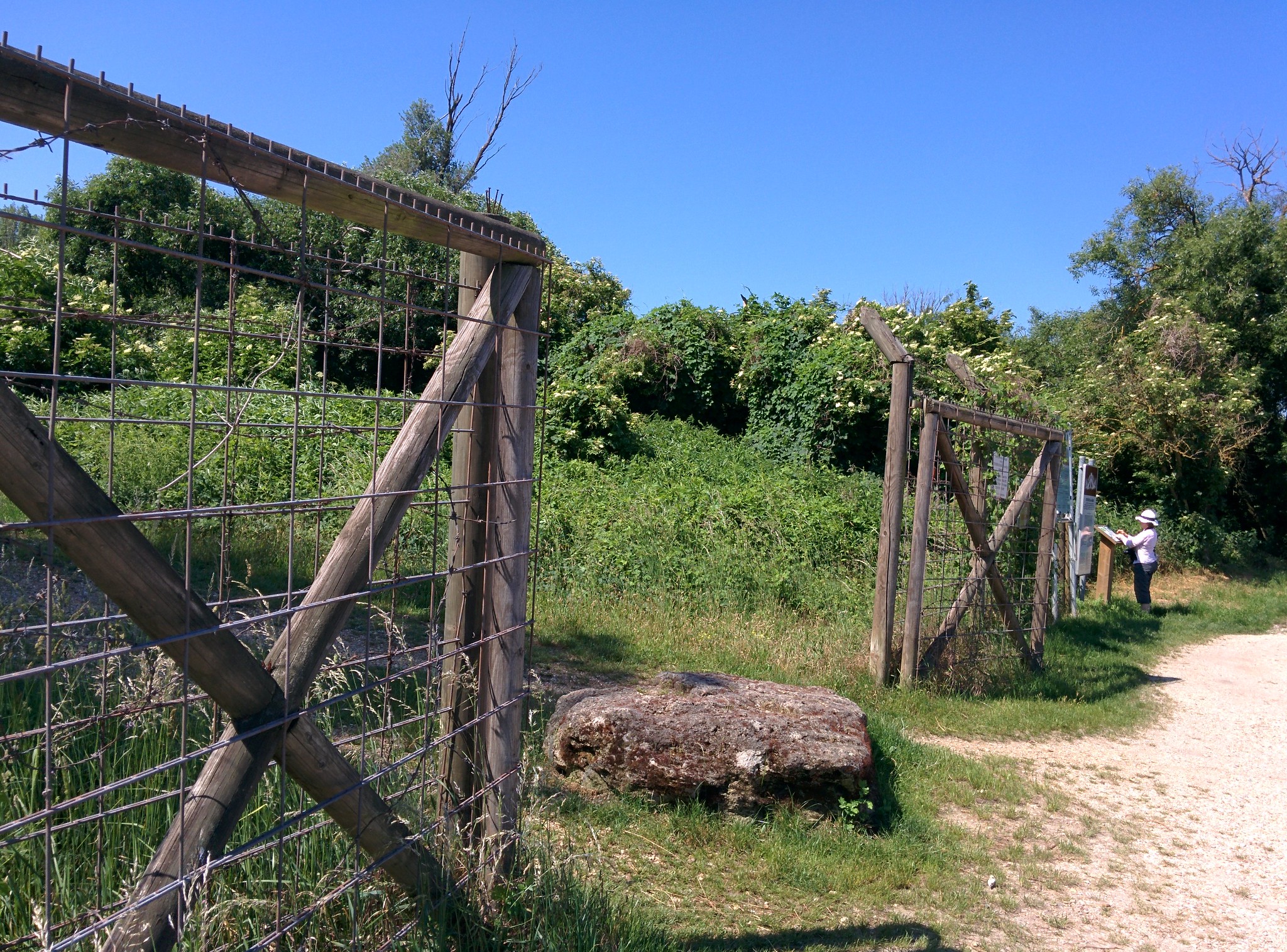 |
| Old border fence - Andau Bridge, Austria |
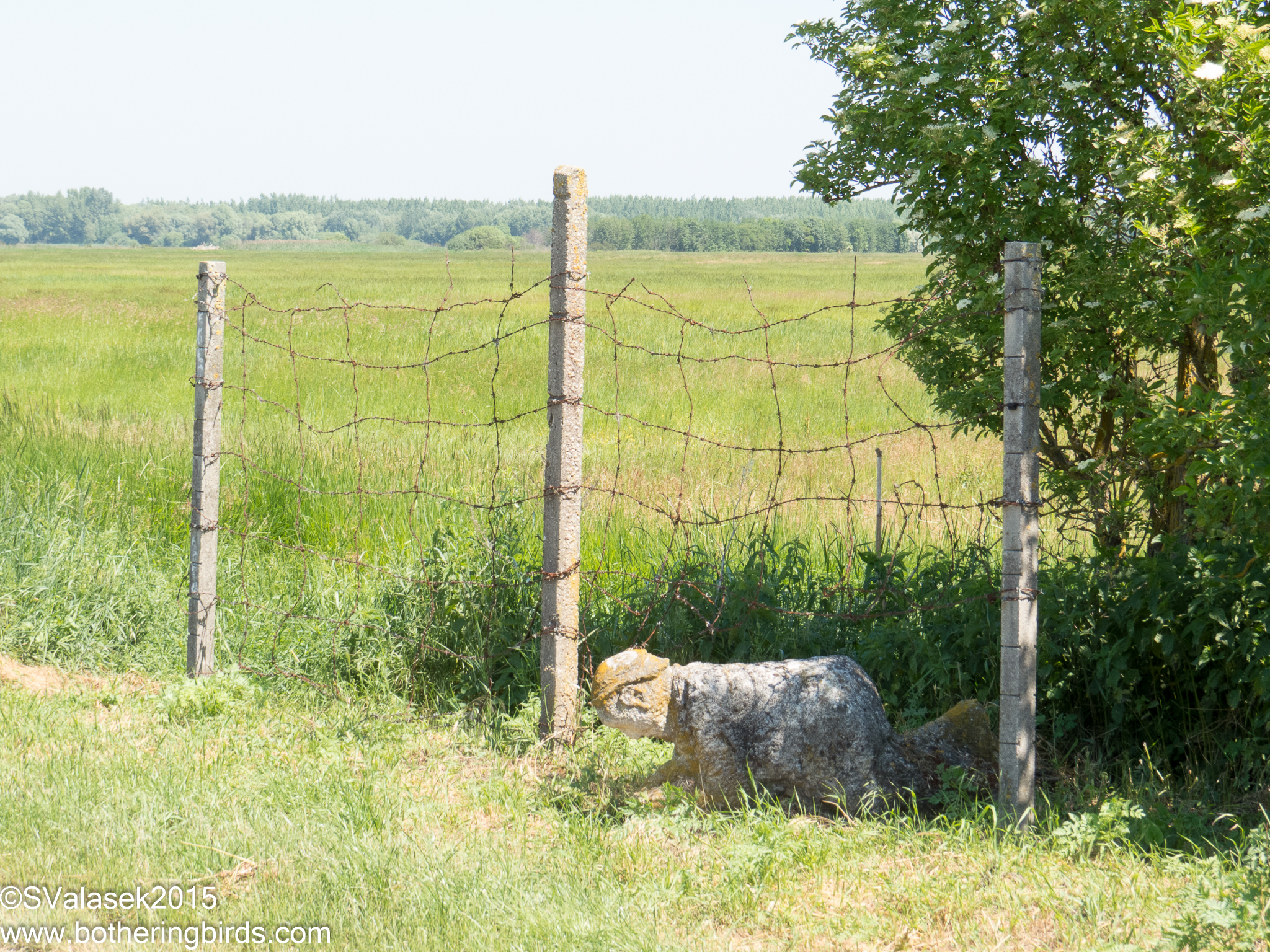 |
| Roadside Sculpture - Andau Bridge, Austria |
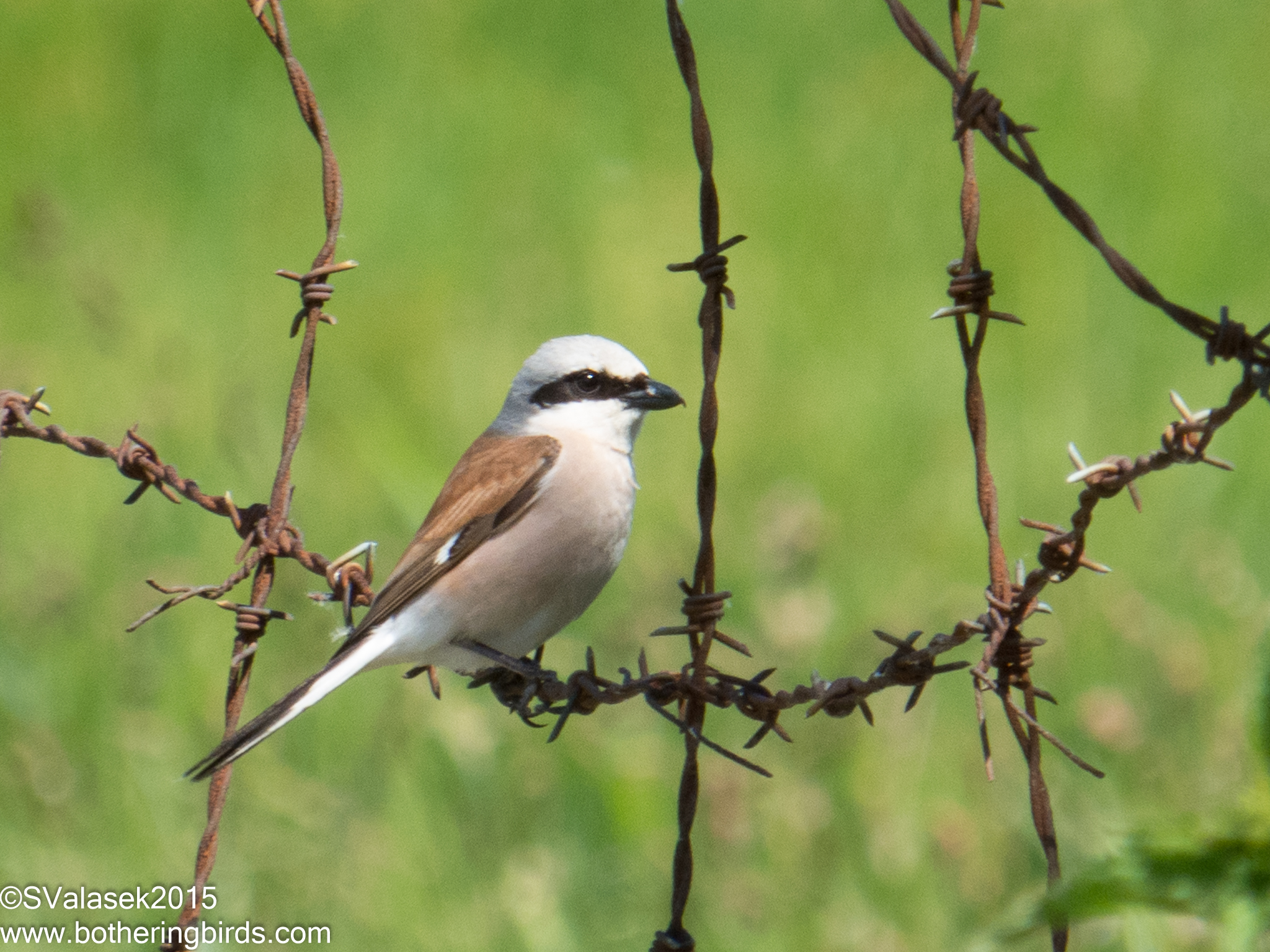 |
| Red-Backed Shrike - Andau Bridge, Austria |
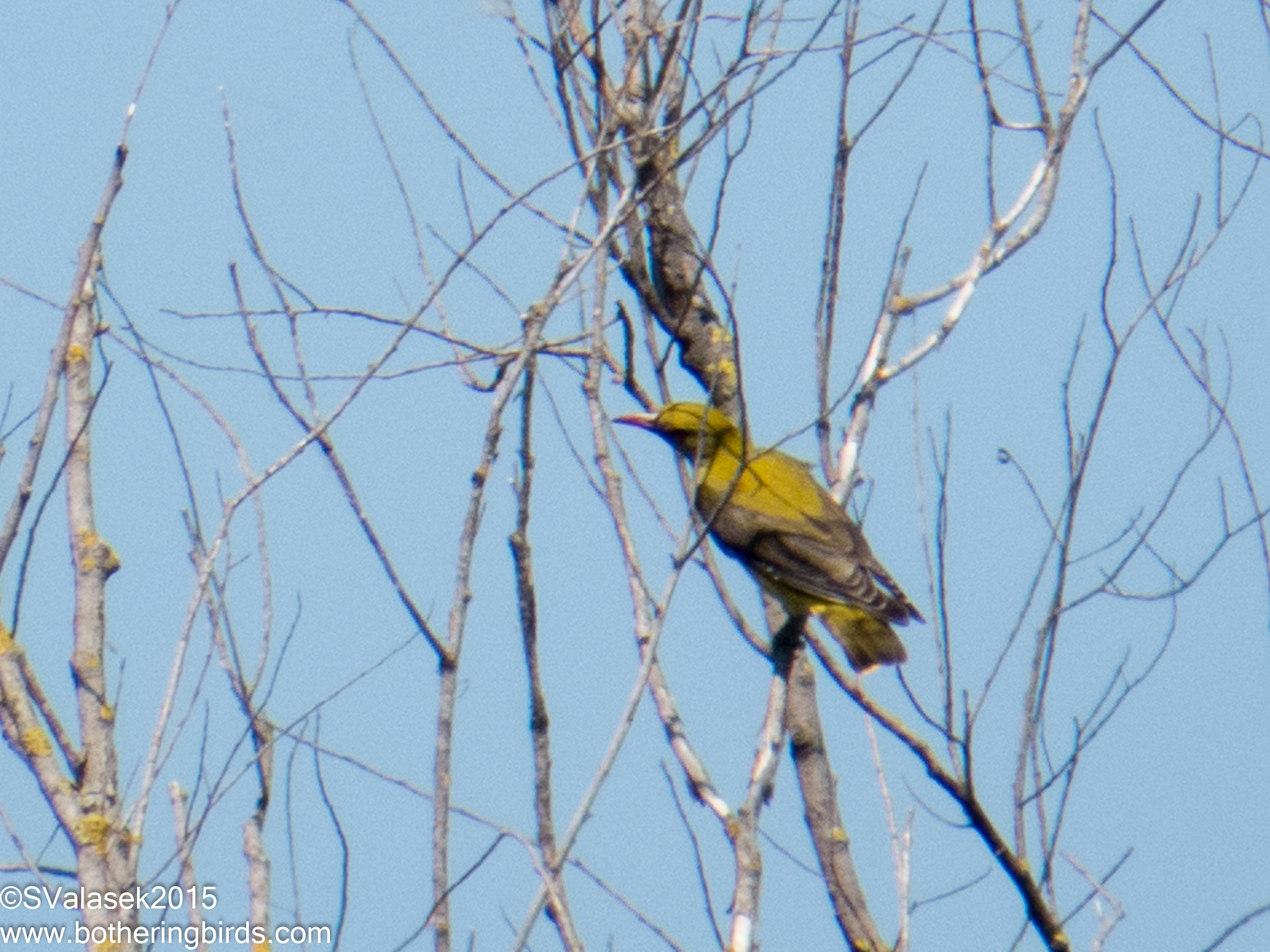 |
| Golden Oriole - Andau Bridge, Austria |
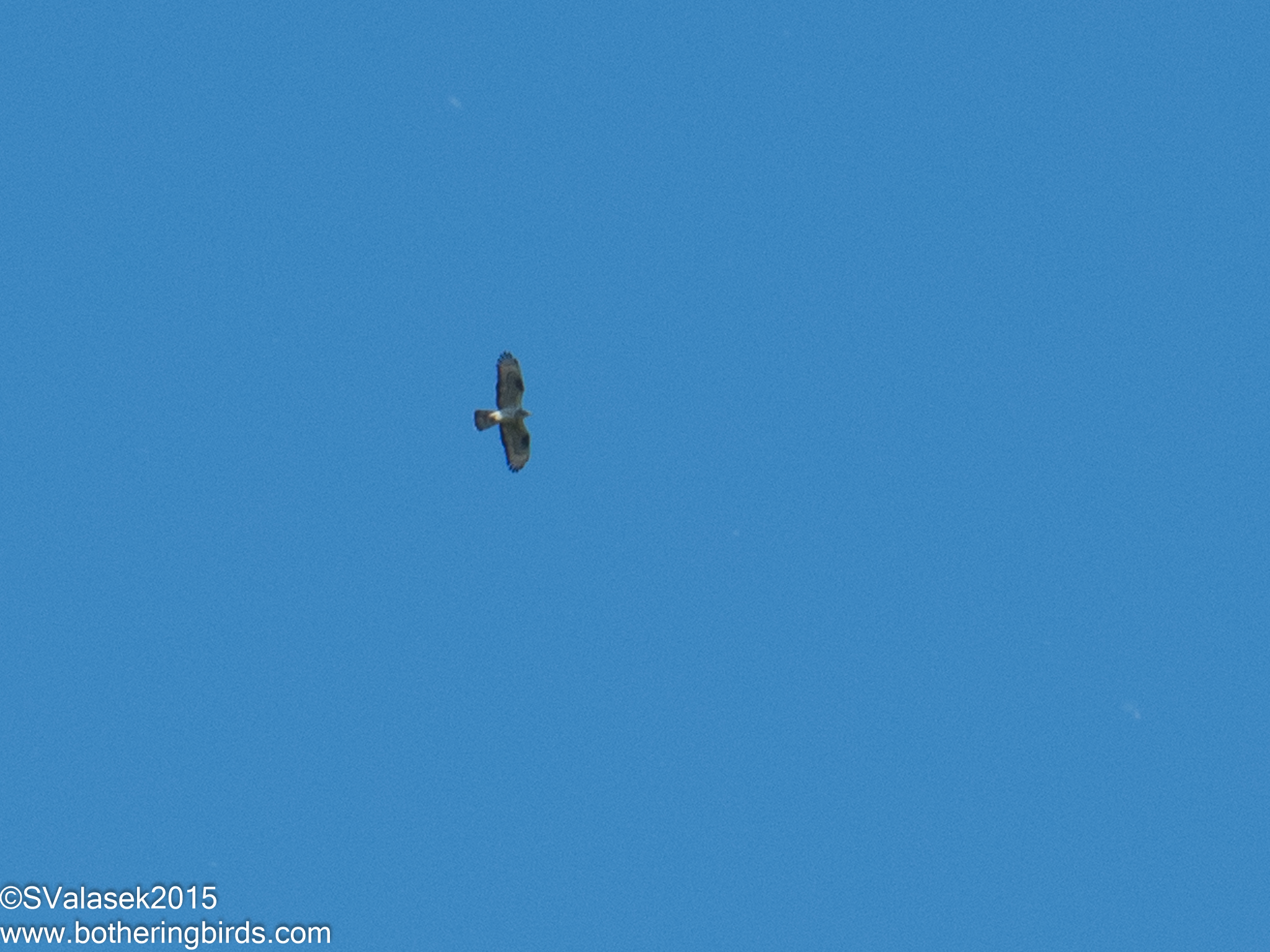 |
| Honey Buzzard - Andau Bridge, Austria |
After we were done at the bridge the group headed back towards Illmitz and lunch. But we had one more stop on the way back. The bus stopped near the location of an older Imperial Eagle's nest for a short visit to see if we could find any more Great Bustards. We were giving the option of walking down the road for a bit and having the bus pick us up. I ended up being the only one to take this offer and it would pay off. I was walking along the road when I saw a big bird flying over a field to my right. I saw a raptor's shape and a white-band on the base of the tail. I immediately thought that it was a Northern (Hen) Harrier. But the narrow wings belonged to a Montagu's Harrier! A lifer tick for me, and the only one to be seen by the group all week.
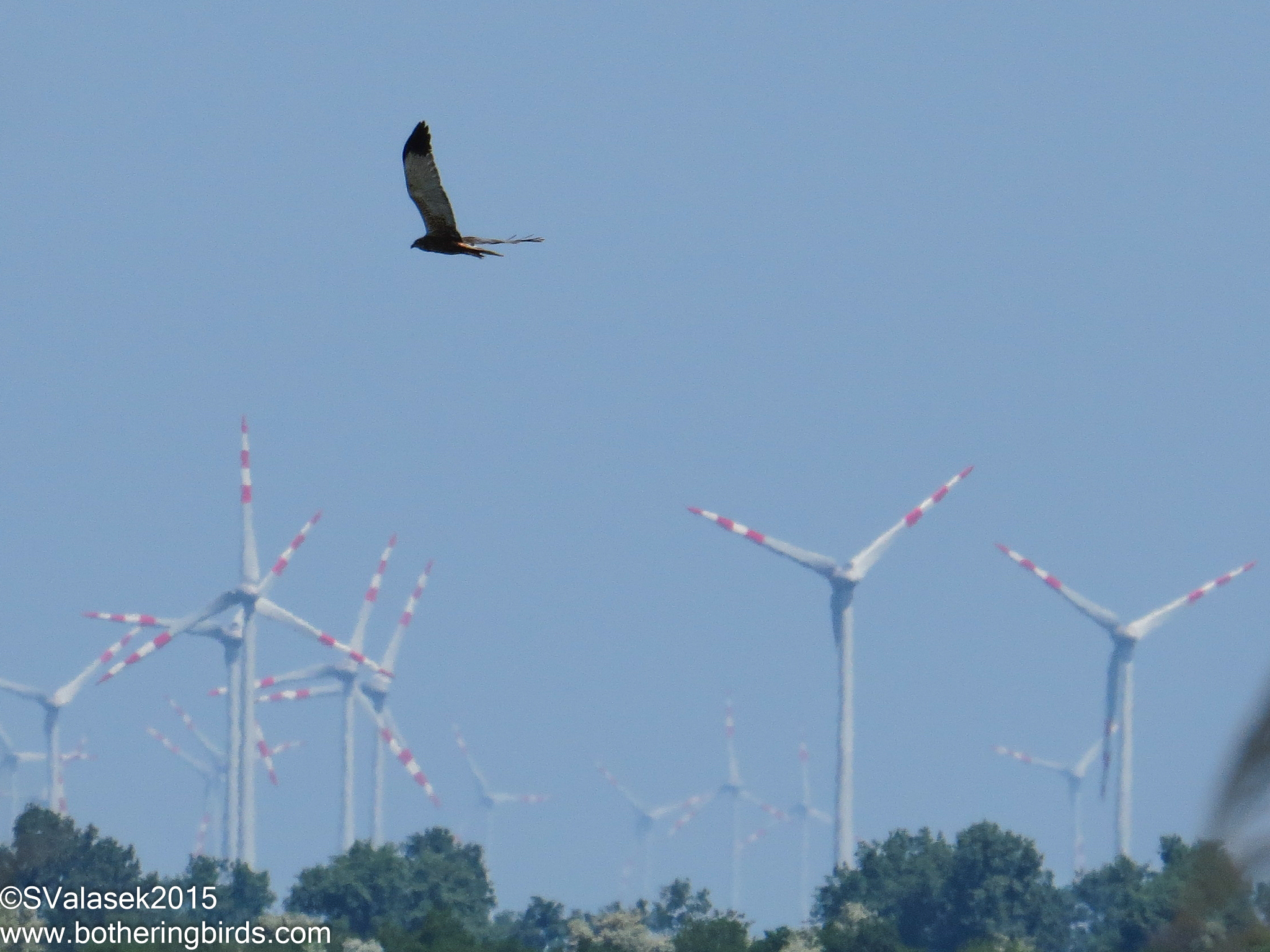 |
| Montagu's Harrier - Burgenland, Austria |
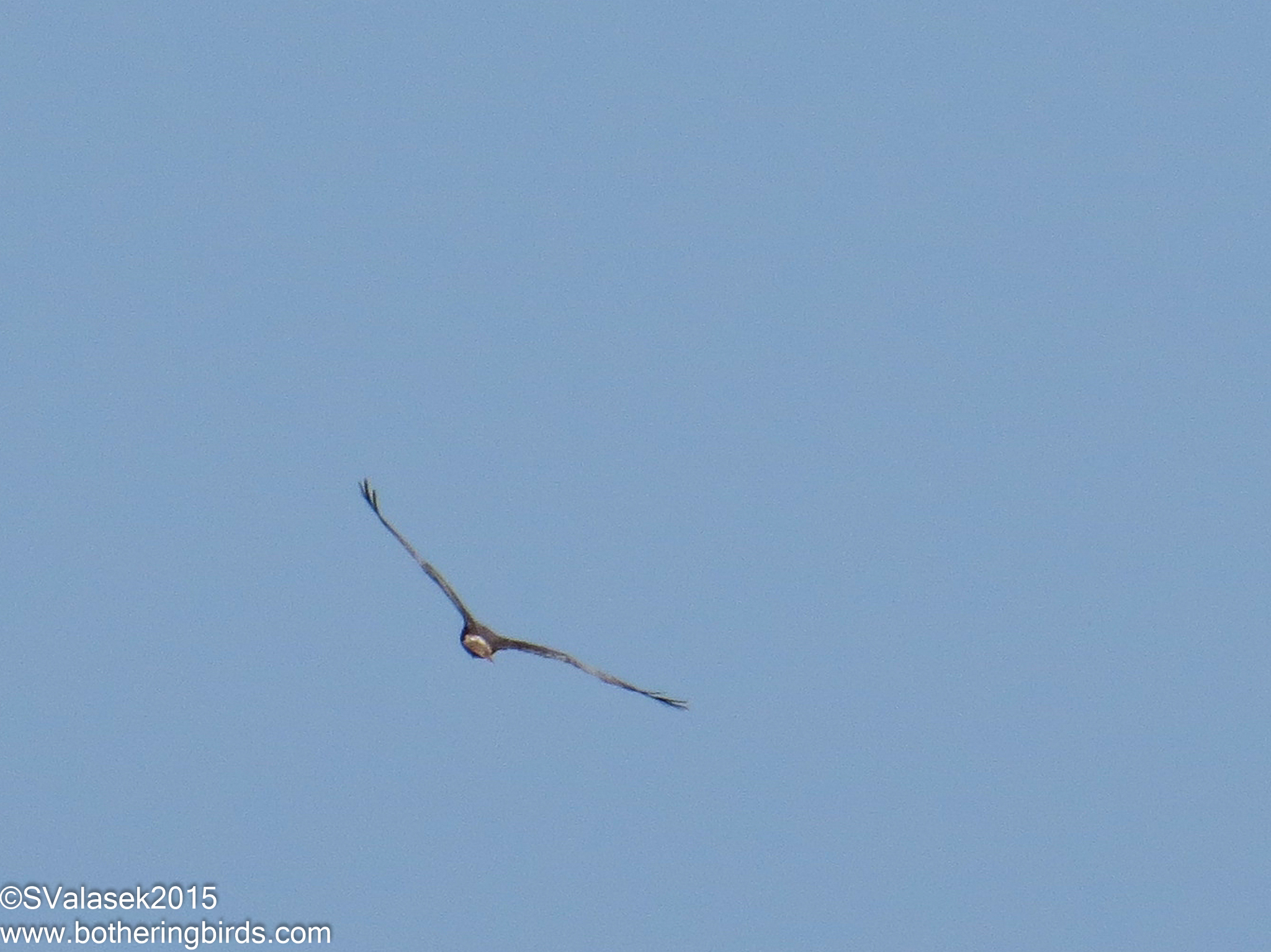 |
| Montagu's Harrier - Burgenland, Austria |
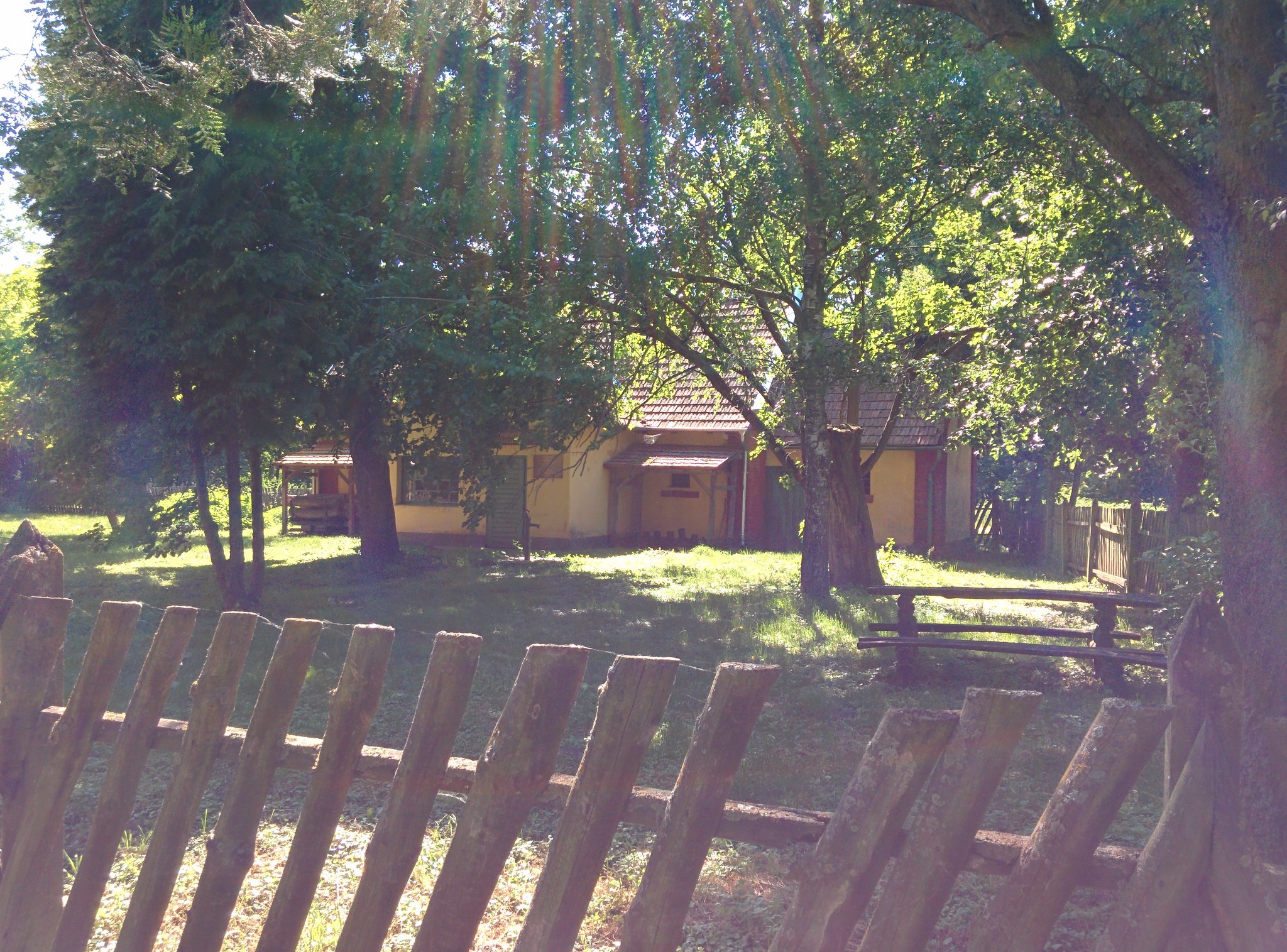 |
| Woodland Cottage - Csorna, Hungary |
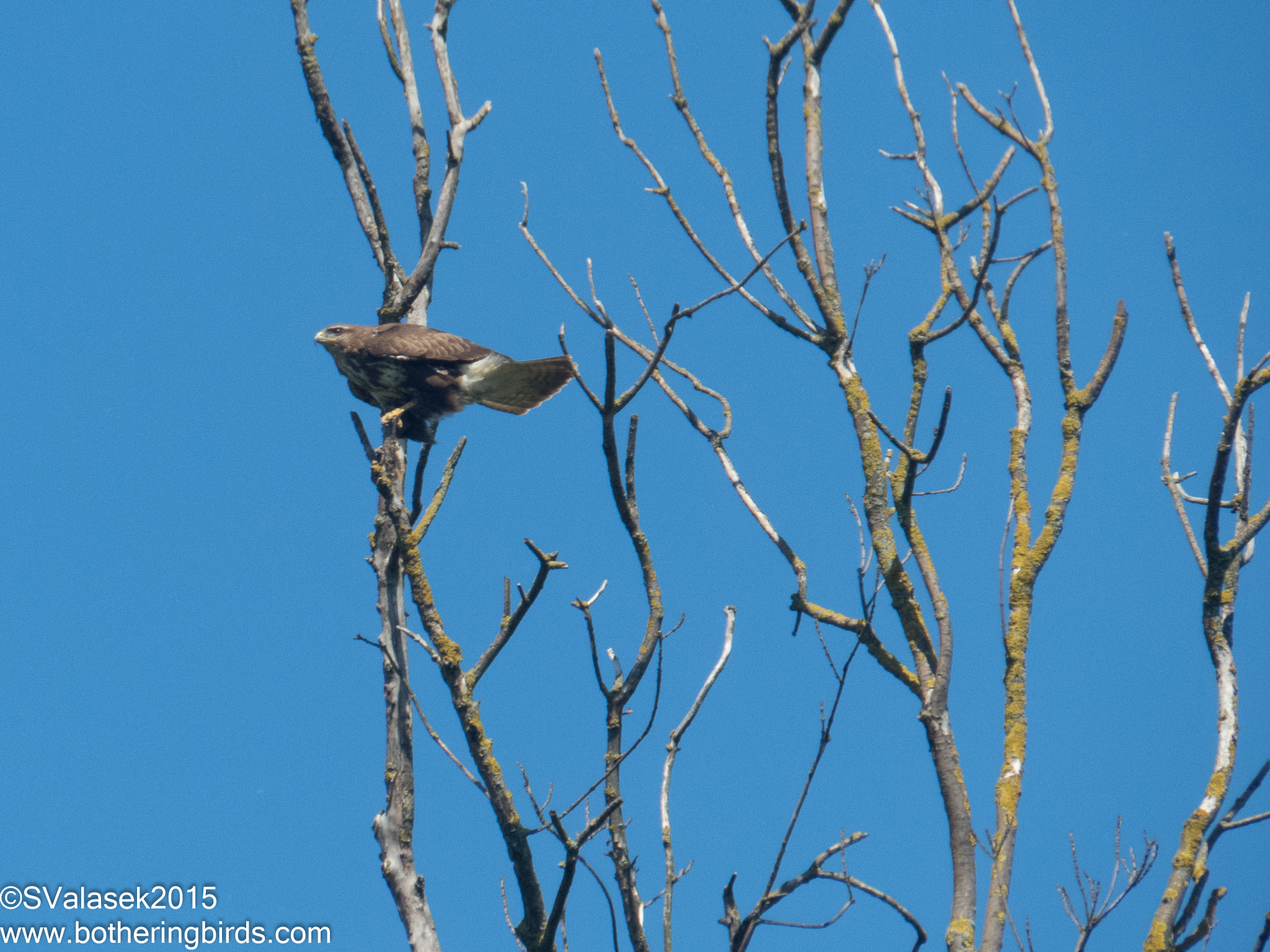 |
| Common Buzzard - Csorna, Hungary |
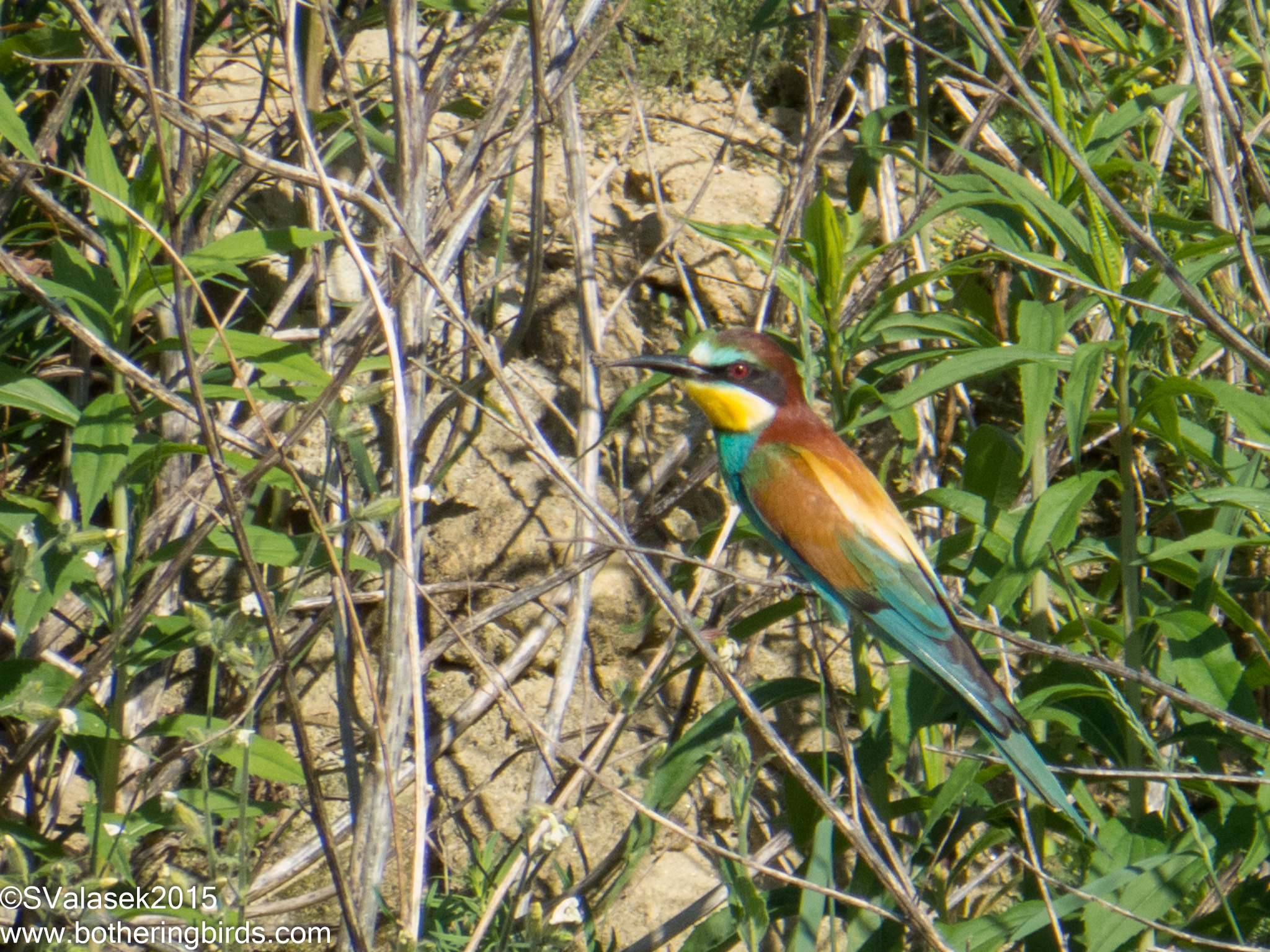 |
| European Bee-Eater - Csorna, Hungary |
A colony of 100-200 pairs were nesting in some exposed sand pits that were below ground level from where we were standing. Lucky for us another observation tower was nearby that gave us a look into where the nest holes were. Bee-Eaters dig burrows similar to a Kingfisher, but they aren't as shy.
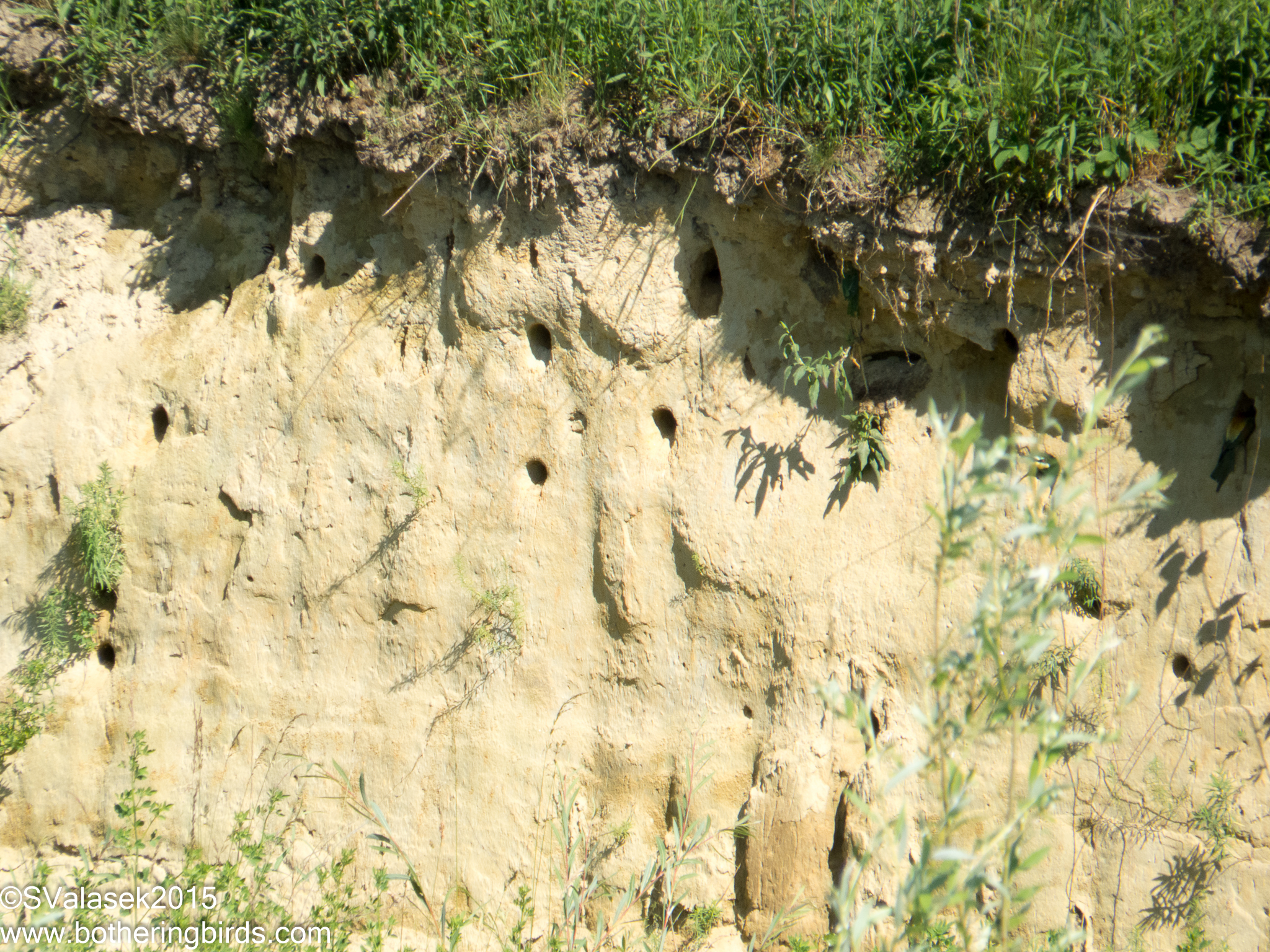 |
| Bee-Eater nest holes - Csorna, Hungary |
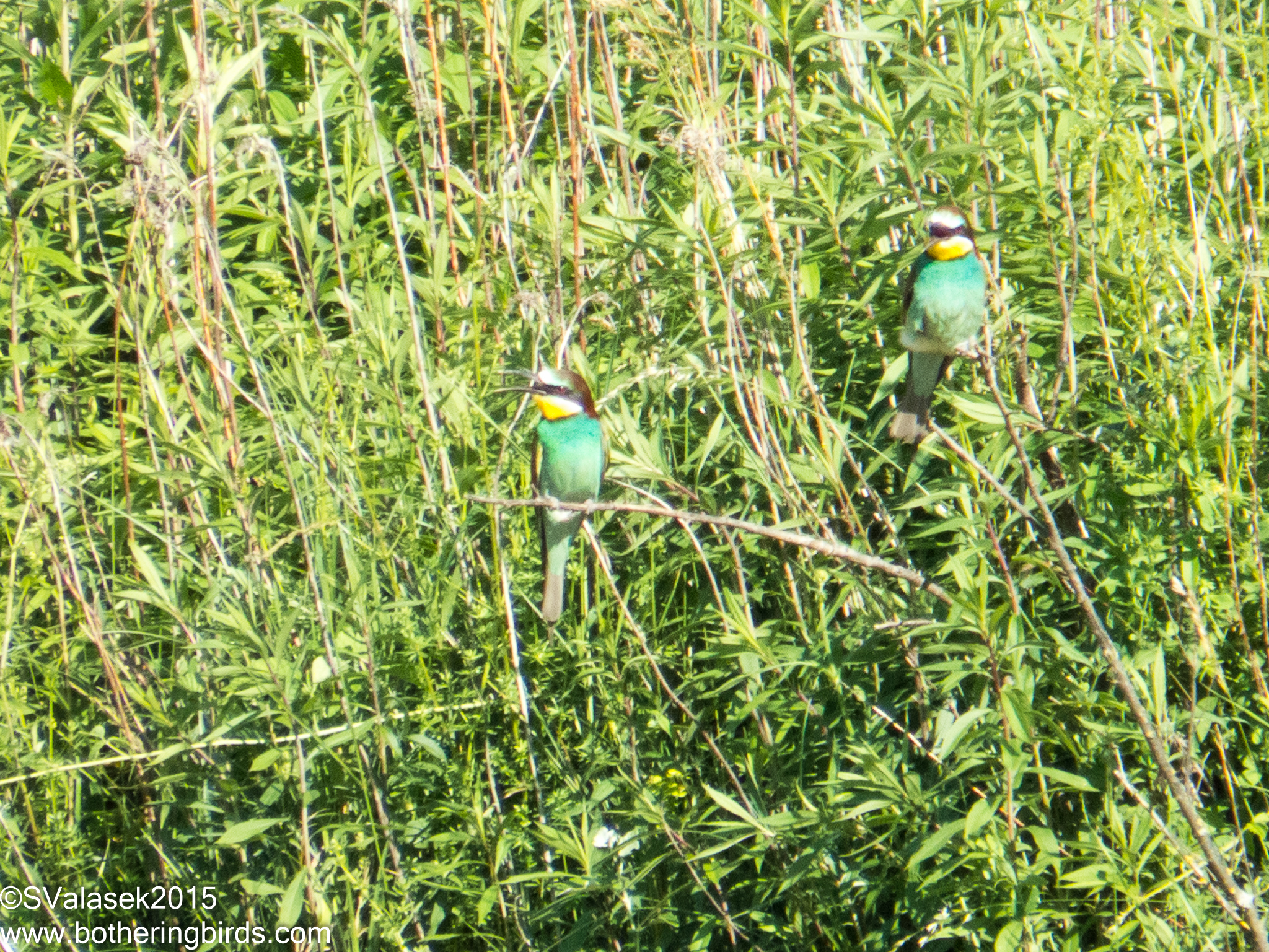 |
| European Bee-Eaters - Csorna, Hungary |
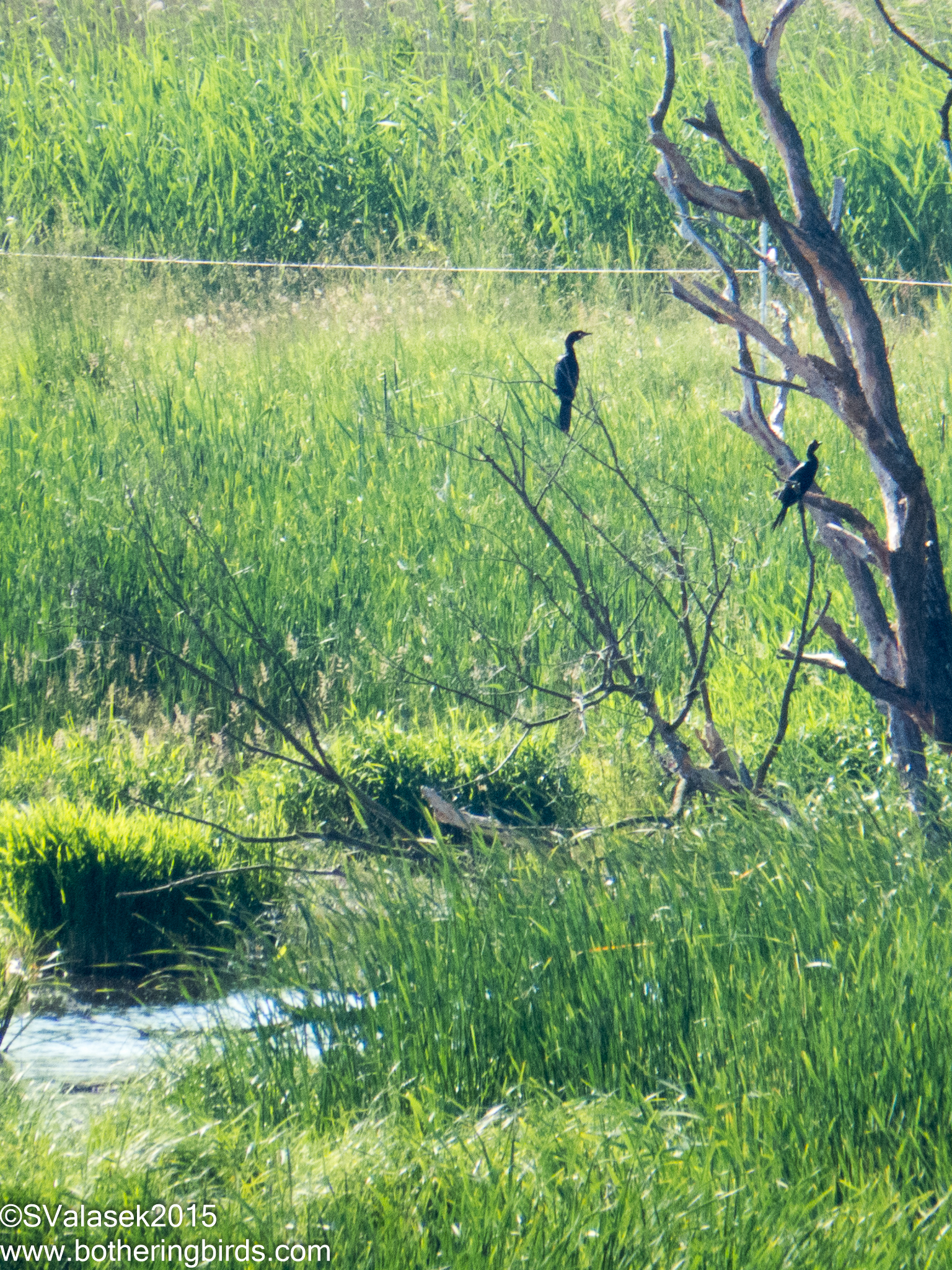 |
| Pygmy Cormorants - Csorna, Hungary |
Day 4 will take us to salt lakes and Ziesels, but that is for the next post.
Cheers!
Wednesday, June 10, 2015
Eastern European Trip Day 4: More Reeds and Long Puddles
This is my fourth post about my recent trip to Austria with Birdwatch Ireland, if you missed them, you should go read the previous posts.
The morning of our fourth day in Austria would take the group to the extensive reed beds that surround Lake Nuesiedel. A road called the Seegasse cuts through the lake on it's way to a popular bathing spot and harbor. We would visit that spot on our final-full day in Austria, and I'll get to that. And in the afternoon we would head East to larger ponds and meadowlands looking for marsh terns.
Our first stop with the motor coach were the aforementioned reed beds. These lined the Seegasse road along a stretch busy with vehicle and bicycle traffic. The reeds also hid ponds of various sizes and breaks would give us some glances at some interesting birds. One of the first birds that we would see was a singing Great Reed-Warbler staking out it's territory.
Nearby the calls of a Penduline Tit were heard, and then the bird was seen collecting nesting materials from the reed heads.
The skies were busy too. We would see Gray, Night and Purple Herons flying over, as well as this low Spoonbill.
Our Austrian guide then heard one of the target species of the trip calling from the opposite side of the road. We quickly crossed to look for a Moustached Warbler, a very elusive resident of the reed beds. It wasn't long until it was spotted back in the reeds singing away.
Unfortunately, it wouldn't get more visible this day. Along with the Moustached and Great Reed-Warblers, we also saw Barred and this (regular) Reed Warbler.
We spotted a pair of Ferruginous Ducks through one of the breaks in the reeds, but the light wasn't good enough for photos. But we also saw a few Great-Crested Grebes, including this one with a chick riding on her back.
After seeing what we could in the reeds, the group returned to where the bus was parked so that we could visit a hide near one of the local ponds. I, however; went for a walk into some nearby woods in a futile search for a Wryneck which could be heard singing when the bus let us off earlier in the morning. I did get a good look at a singing Common Cuckoo and a Female Balackcap.
After I made my way out of the woods and just before we reboarded the bus, I was told that Little Ringed Plovers were at the hide, they being a lifer tick for me, I ran over for a quick look and was rewarded with some really close views.
That yellow eye-ring is a great field mark for Little Ringed Plover and was even better to see in person. In addition to the Plovers, a Hoopoe was also in front of the hide foraging. This was probably one of the ones that we had seen a few days earlier taking food to a nearby nest.
After my run to the hide and then back to the bus, we made a short trip to the nearby Zicklacke, which is one of the larger lakes inside the reed beds surrounding the much larger Nuesiedlersee. Here we saw the typical species of Pied Avocets, Black-Winged Stilts, Mute Swans, Mallards, molting Graylag Geese and even a Gargany.
But we also saw a pair of unexpected Kentish (aka Snowy) Plovers.
And some of the group got excellent looks at a Barred Warbler, but I didn't manage any photos of it. Once again we boarded the bus for a trip back to Illmitz and lunch. But before we could leave the Zicklacke, a Crested Lark was spotted on the side of the road.
After our lunch break we ventured East again to the Lange Lacke area. Lange Lacke is German for "long puddles" and describes the meadows and wetlands found in the area.
These particular meadows are the last to be grazed by cattle using traditional methods of shepherds with dogs and are protected. These meadows have been used this way for over 400 years. We could only stand at the edge and scan for birds on the various ponds. Once again the expected waterfowl and waders were seen. But across the road a small stand of trees held another Long-Eared Owl nest. This one had one of the adults in plain view, my best view ever of a LEOW.
The area also held lots of Western Yellow Wagtails of the "blue-headed" subspecies.
The reason for our trip was to see nesting Whiskered Terns. They are one of the 3 types of marsh terns, terns not typically found near coasts, and the one type that is not commonly found in Ireland or the UK. There were a few nests in one of the flooded fields and adults were constantly flying around.
The Lange Lacke area was our final birding spot on day 4, but it wasn't the last stop for the group. We traveled a bit further east to see a certain mammal, but I'm planning on making a separate post of all the non-bird photos that I took during the trip. These are long enough as it is.
The morning of our fourth day in Austria would take the group to the extensive reed beds that surround Lake Nuesiedel. A road called the Seegasse cuts through the lake on it's way to a popular bathing spot and harbor. We would visit that spot on our final-full day in Austria, and I'll get to that. And in the afternoon we would head East to larger ponds and meadowlands looking for marsh terns.
Our first stop with the motor coach were the aforementioned reed beds. These lined the Seegasse road along a stretch busy with vehicle and bicycle traffic. The reeds also hid ponds of various sizes and breaks would give us some glances at some interesting birds. One of the first birds that we would see was a singing Great Reed-Warbler staking out it's territory.
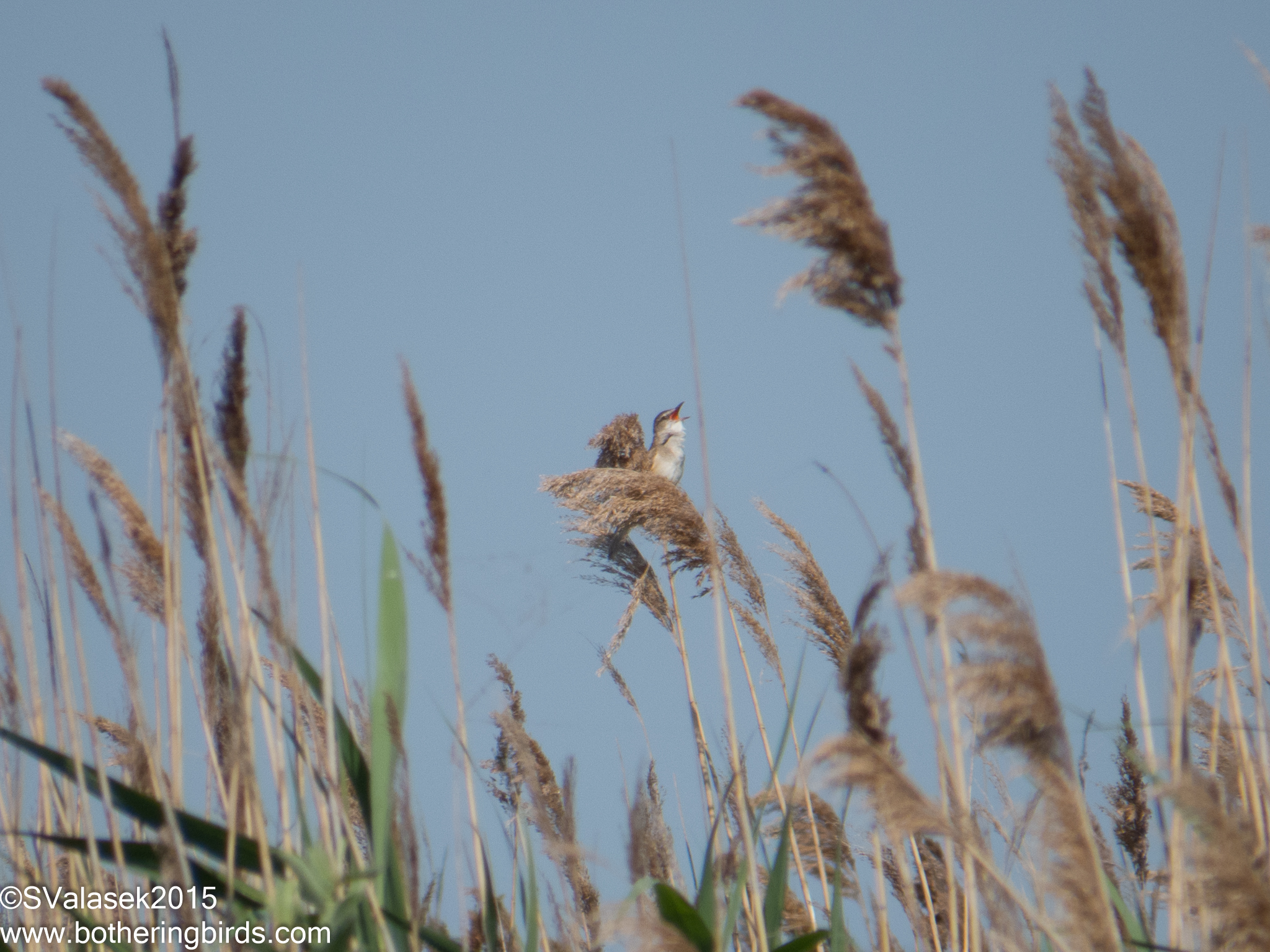 |
| Greet Reed-Warbler - Nuesiedlersee NP, Astria |
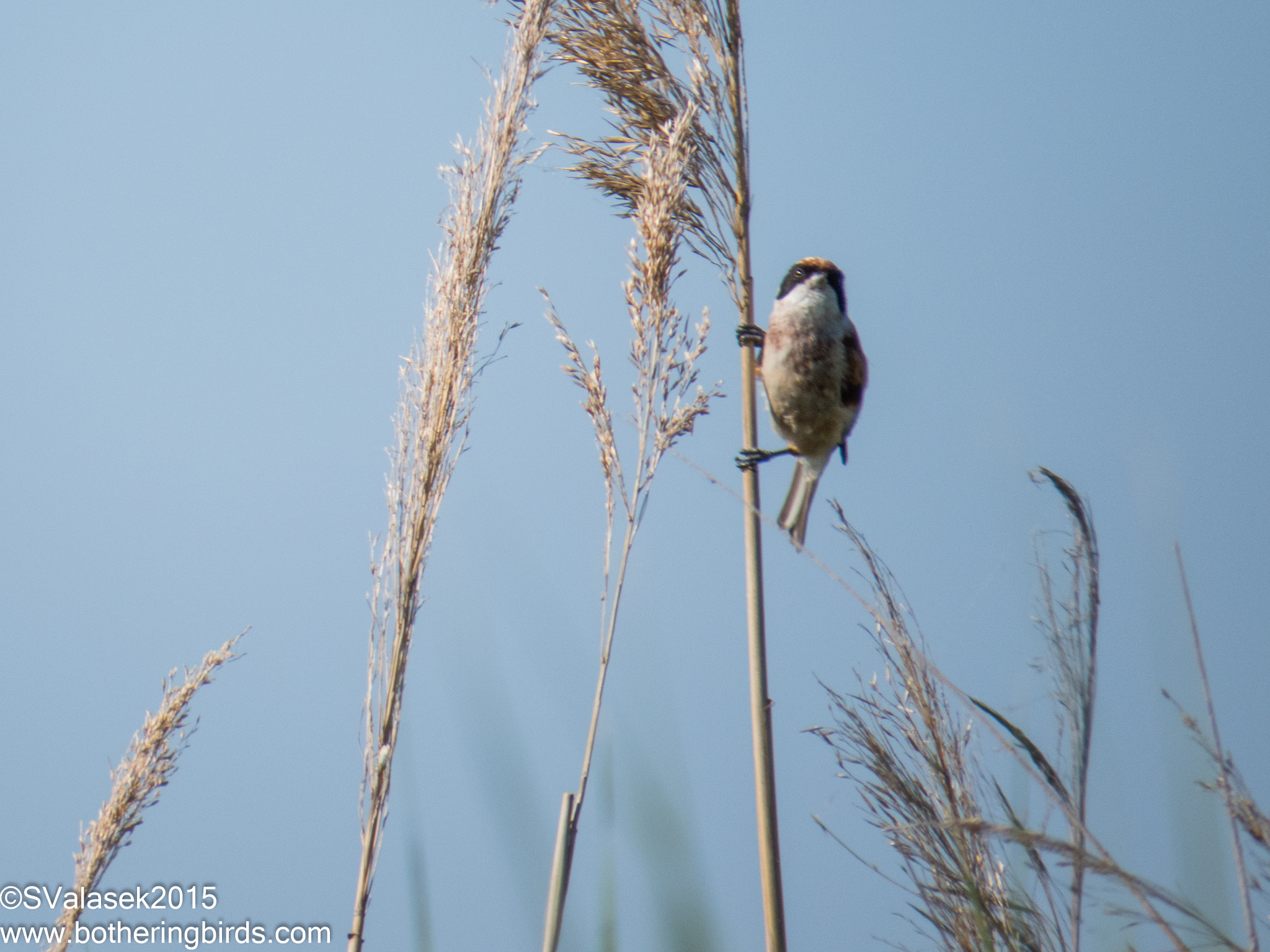 |
| Penduline Tit - Nuesiedlersee NP, Austria |
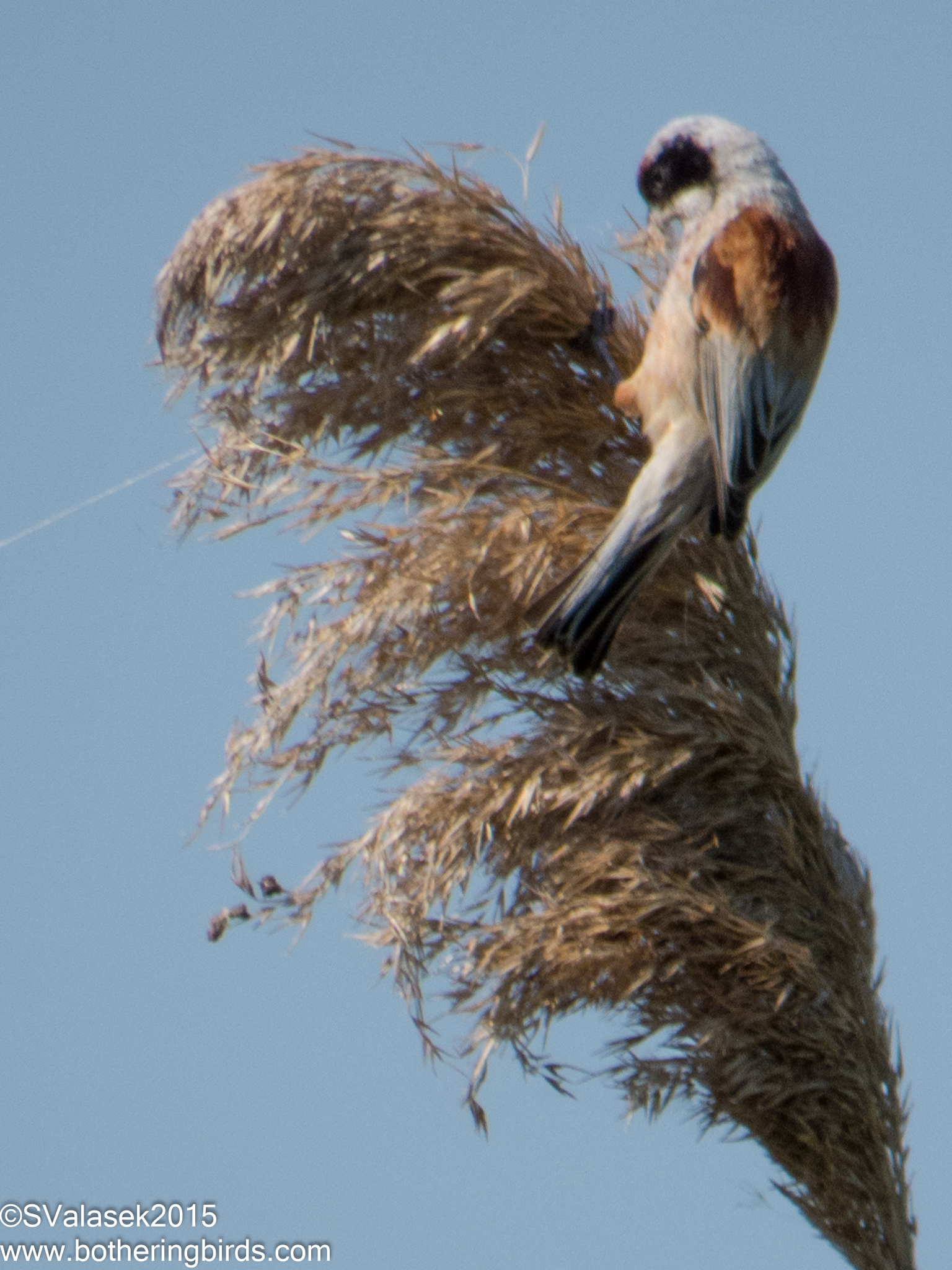 |
| Penduline Tit - Nuesiedlersee NP, Austria |
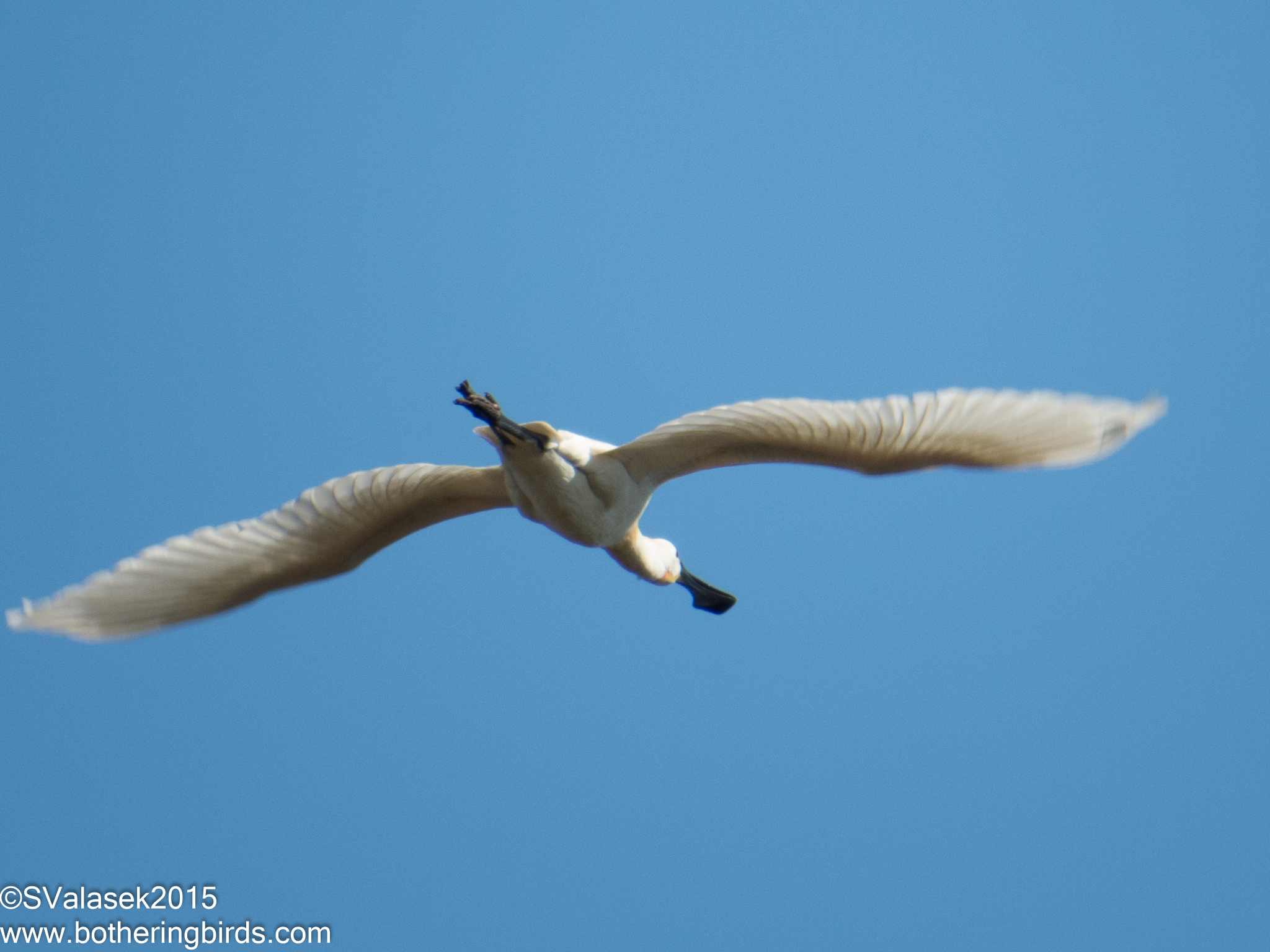 |
| Spoonbill - Nuesiedlersee NP, Austria |
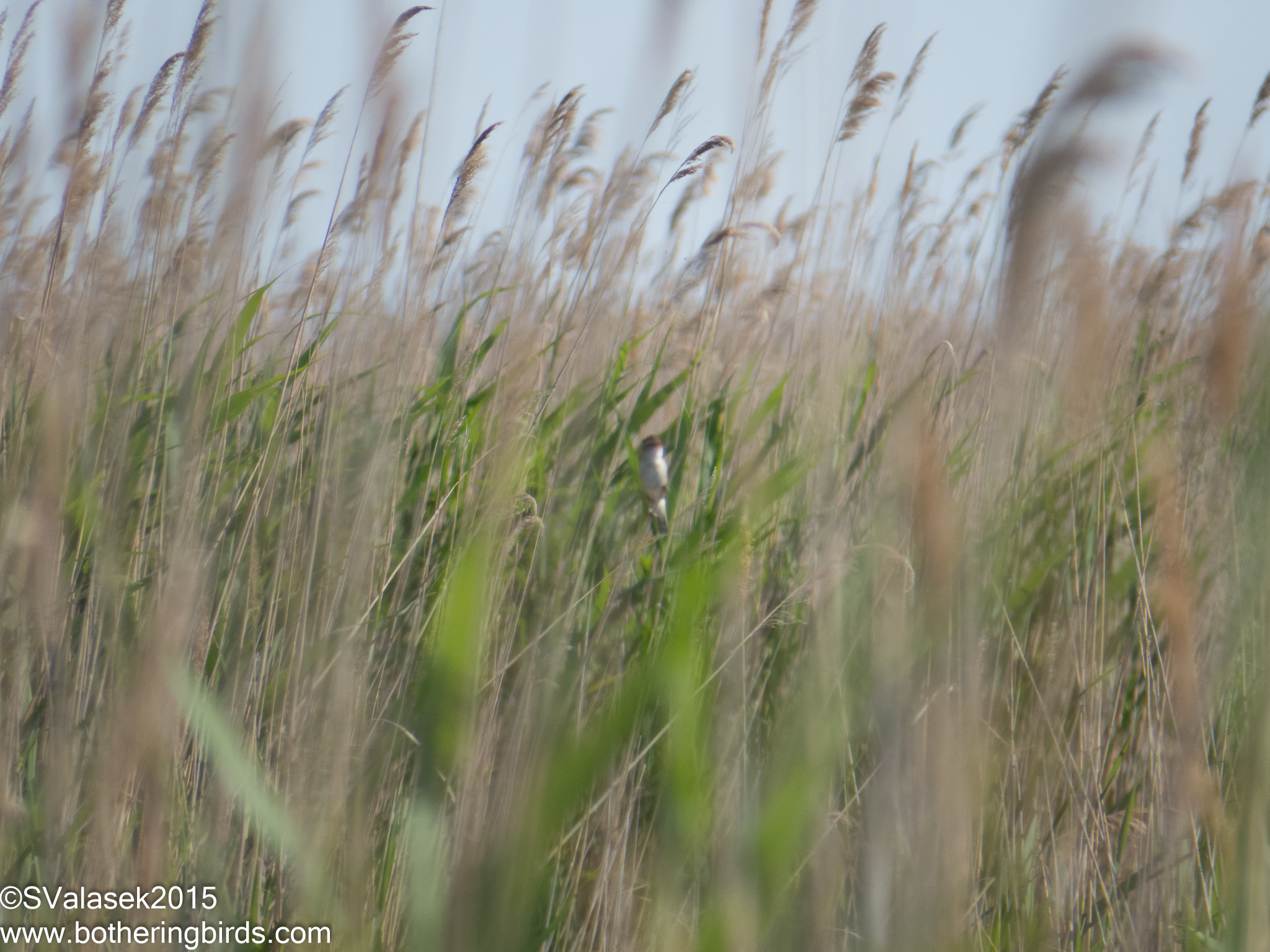 |
| Moustached Warbler - Nuesiedlersee NP, Austria |
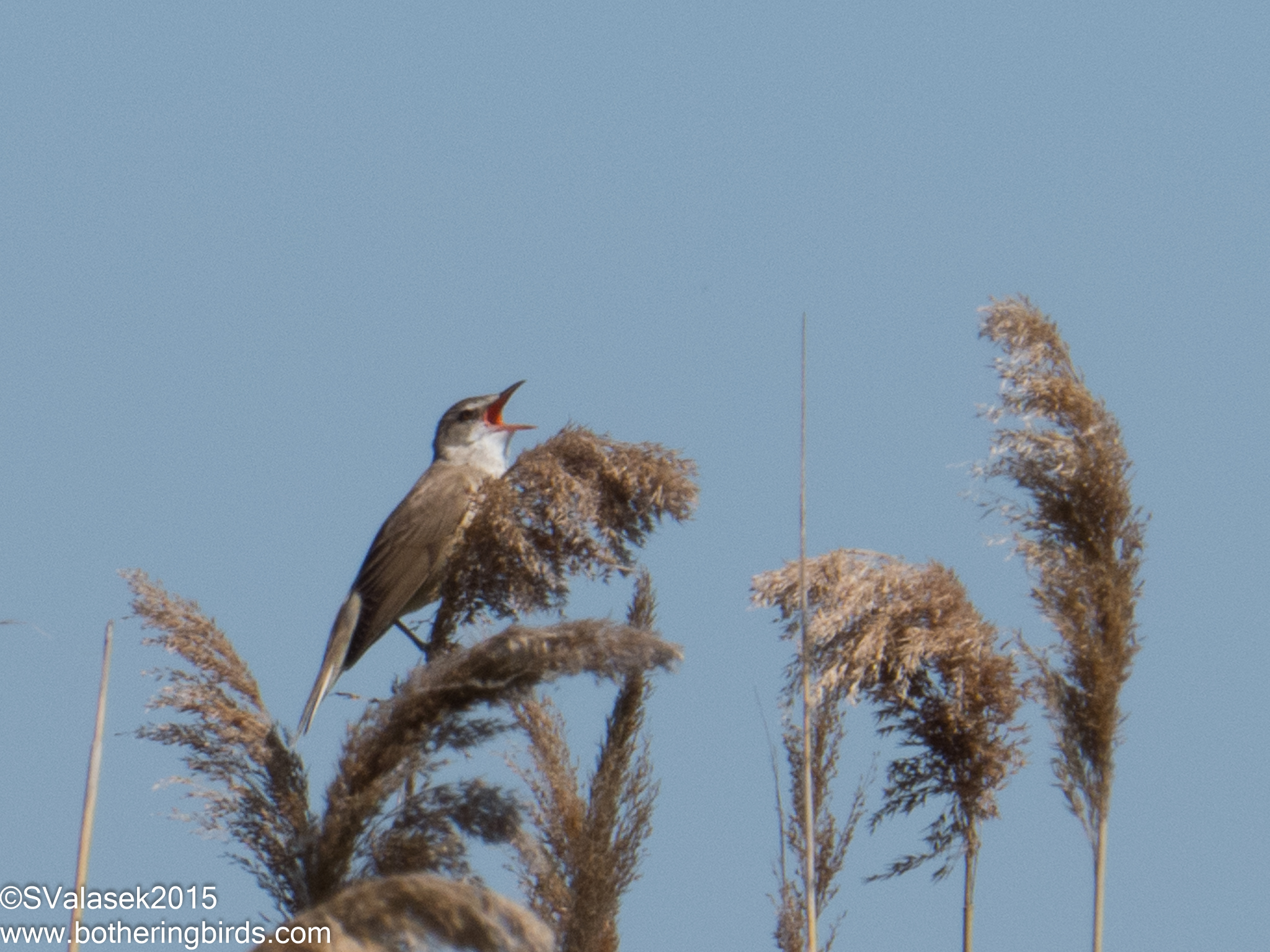 |
| Eurasian Reed Warbler - Nuesiedlersee NP, Austria |
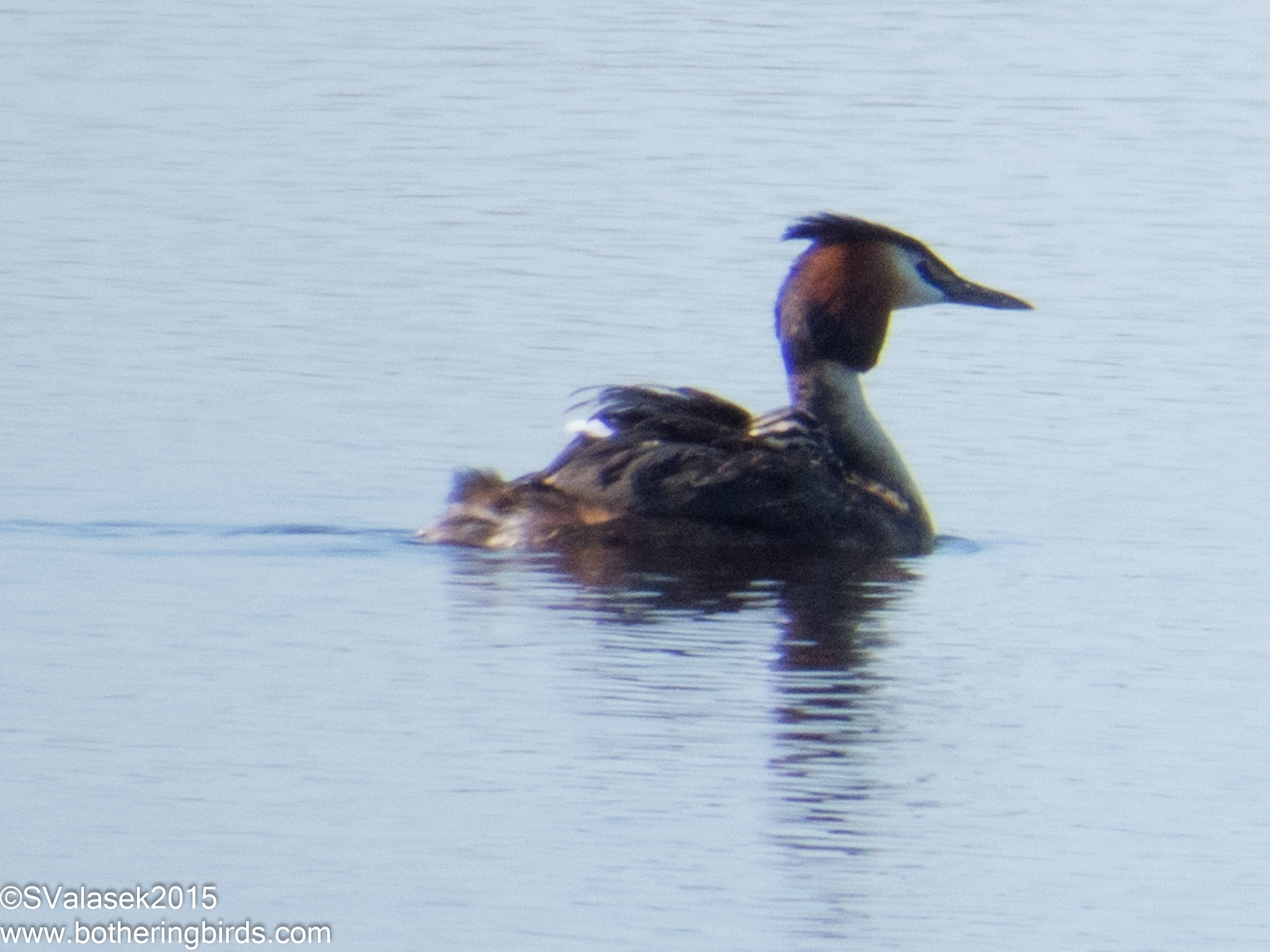 |
| Great-Crested Grebes - Nuesiedlersee NP, Austria |
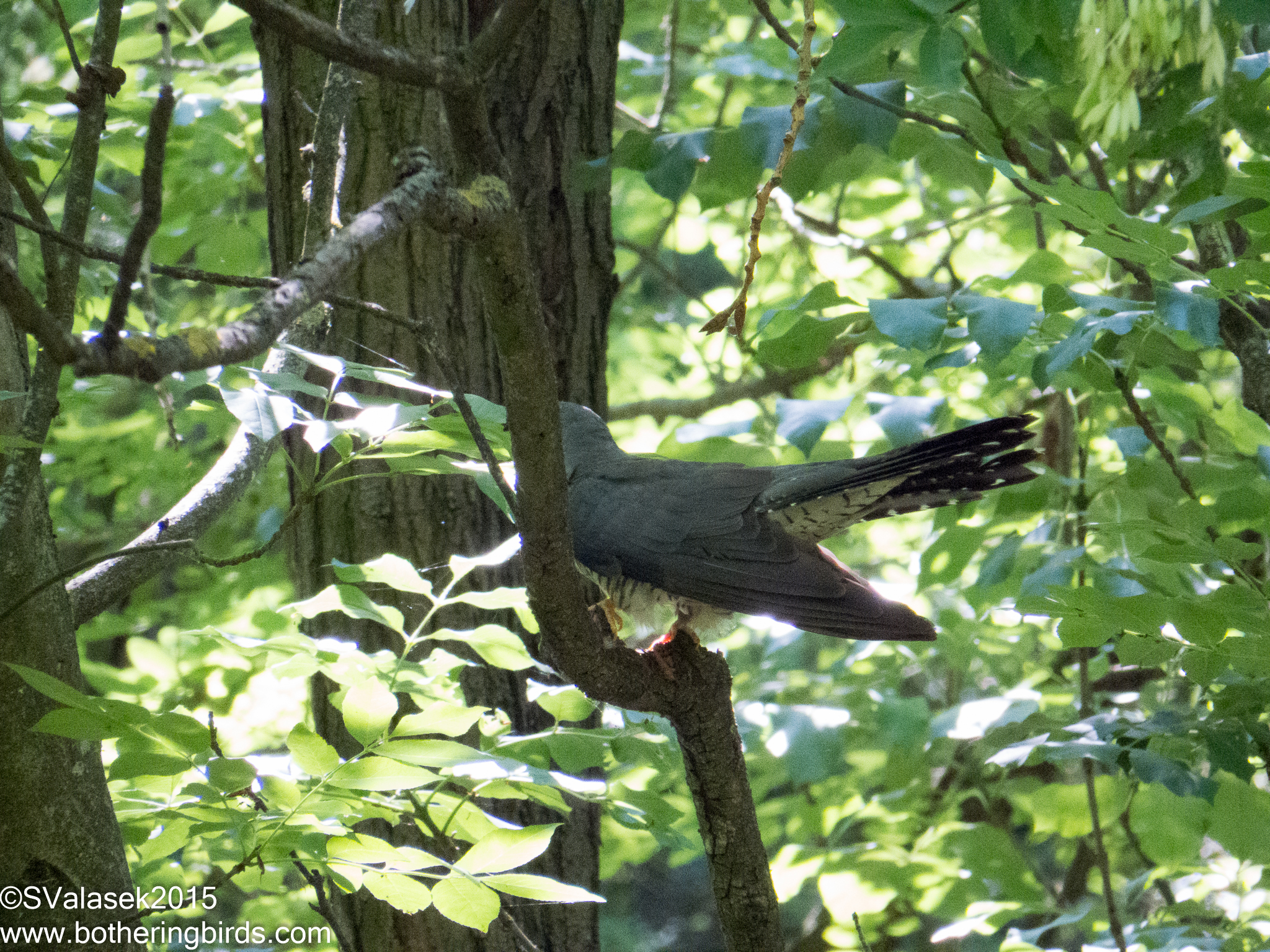 |
| Common Cuckoo - Nuesiedlersee NP, Austria |
 |
| Blackcap (female) - Nuesiedlersee NP, Austria |
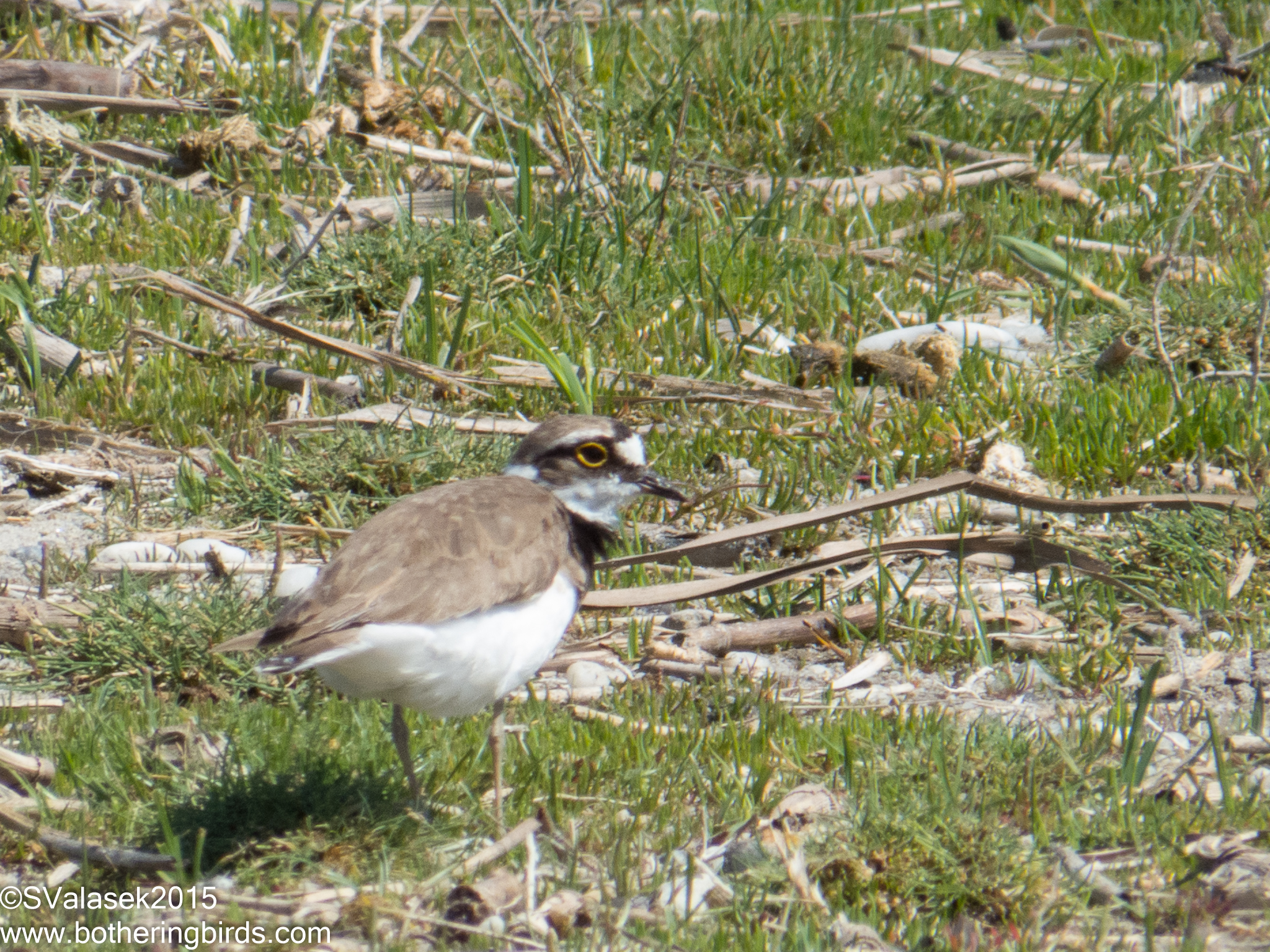 |
| Little Ringed Plover - Nuesiedlersee NP, Austria |
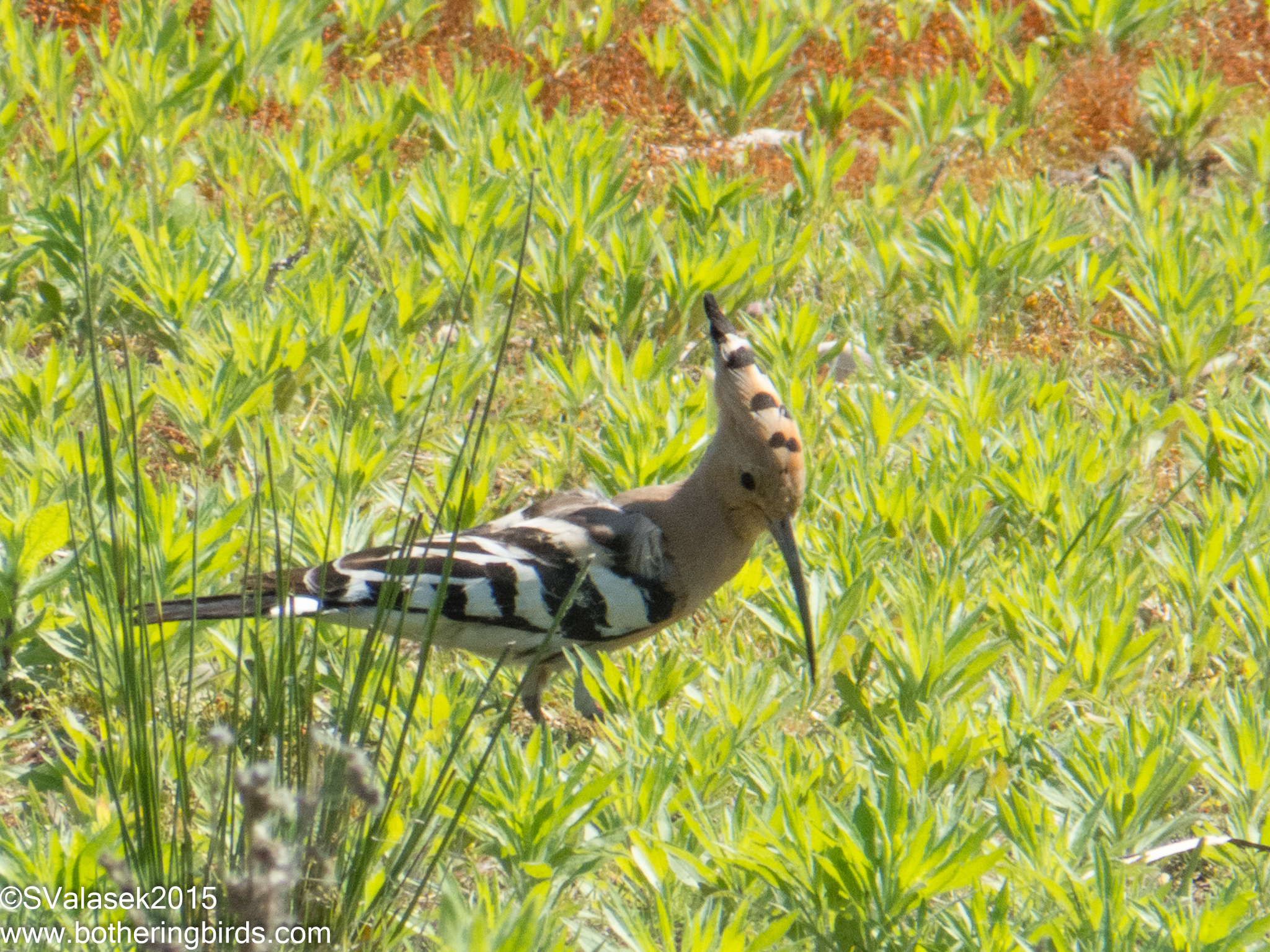 |
| Hoopoe - Nuesiedlersee NP, Austria |
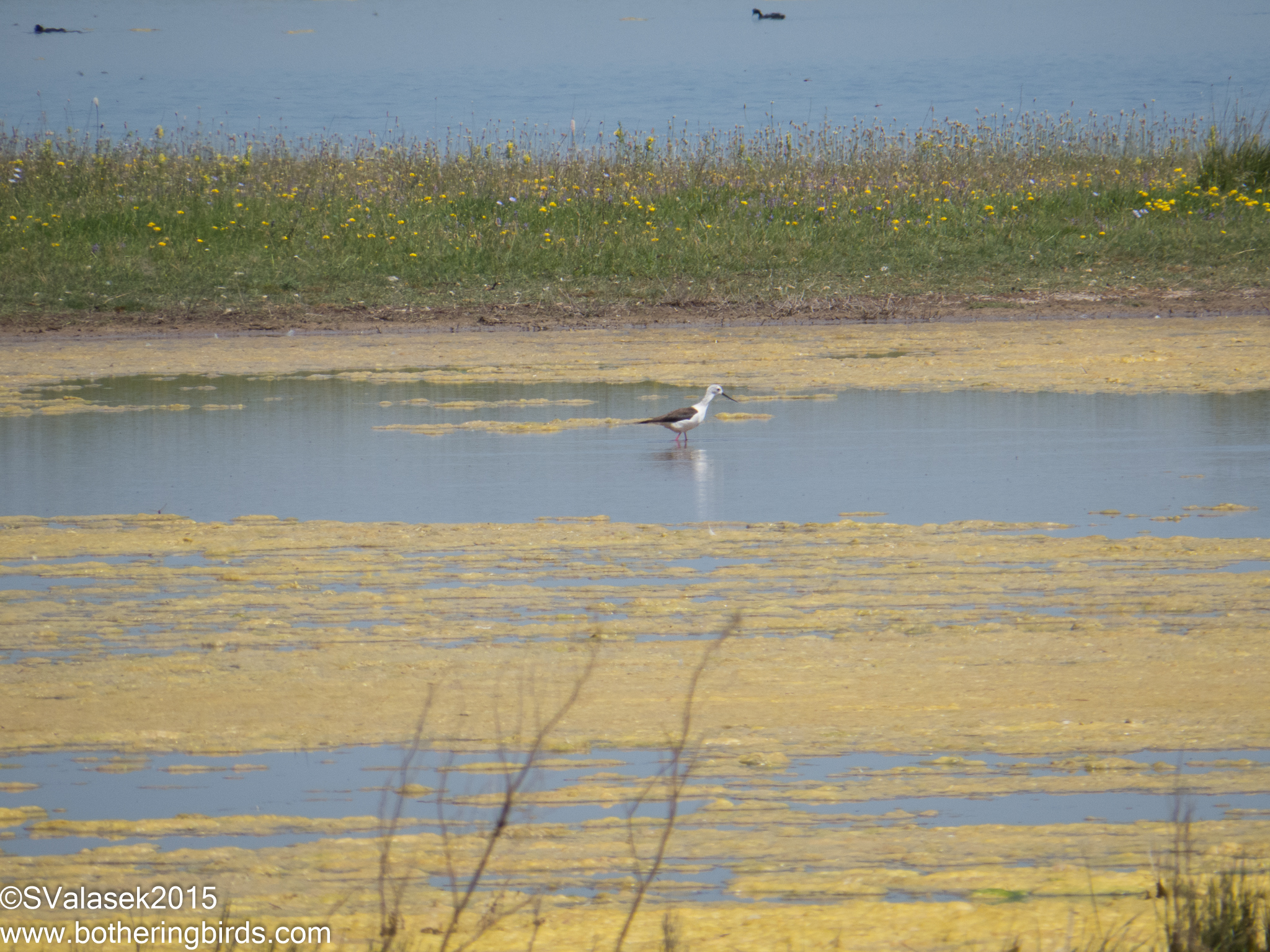 |
| Black-Winged Stilt - Zicklacke, Austria |
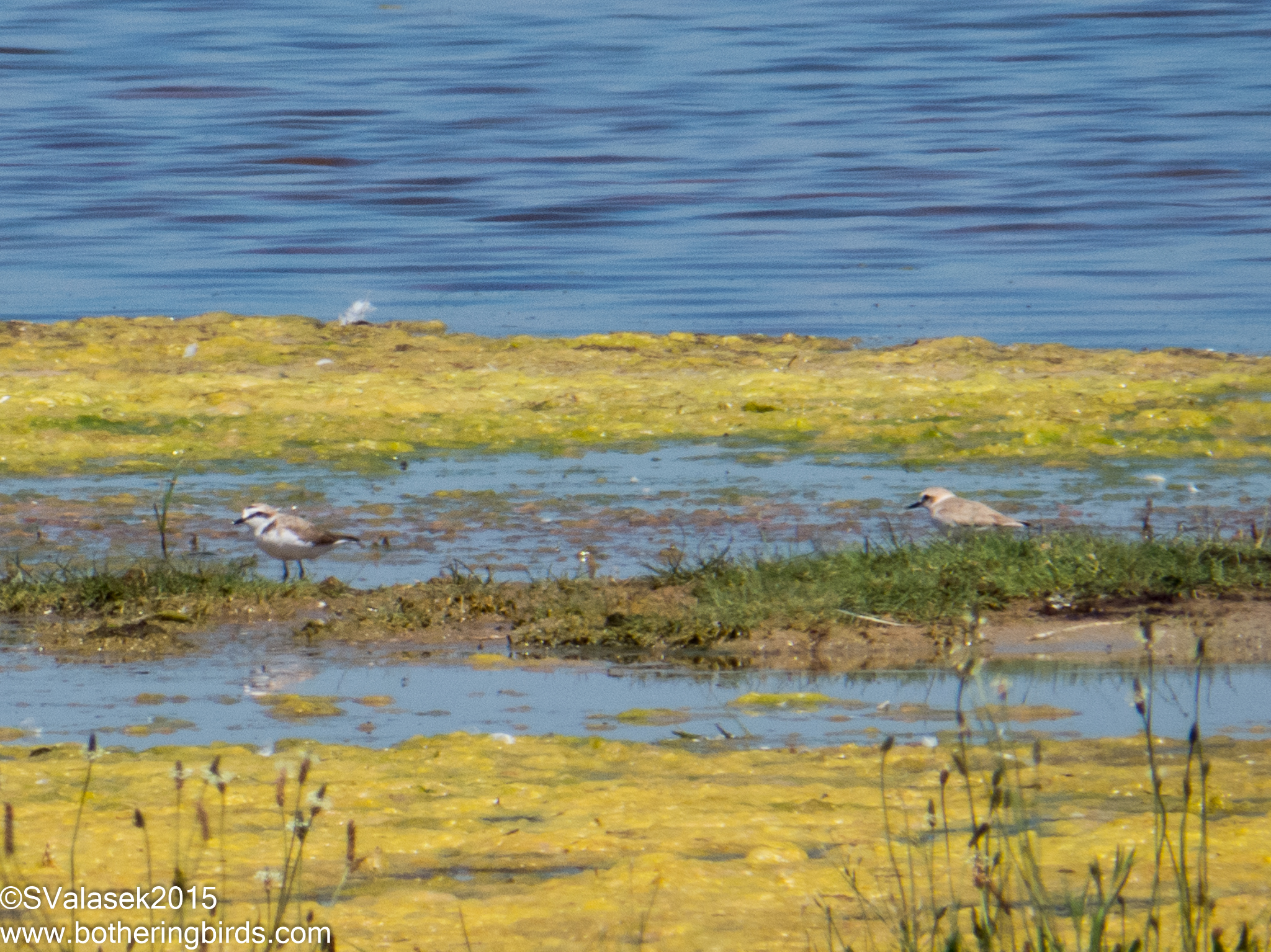 |
| Kentish Plovers - Zicklacke, Austria |
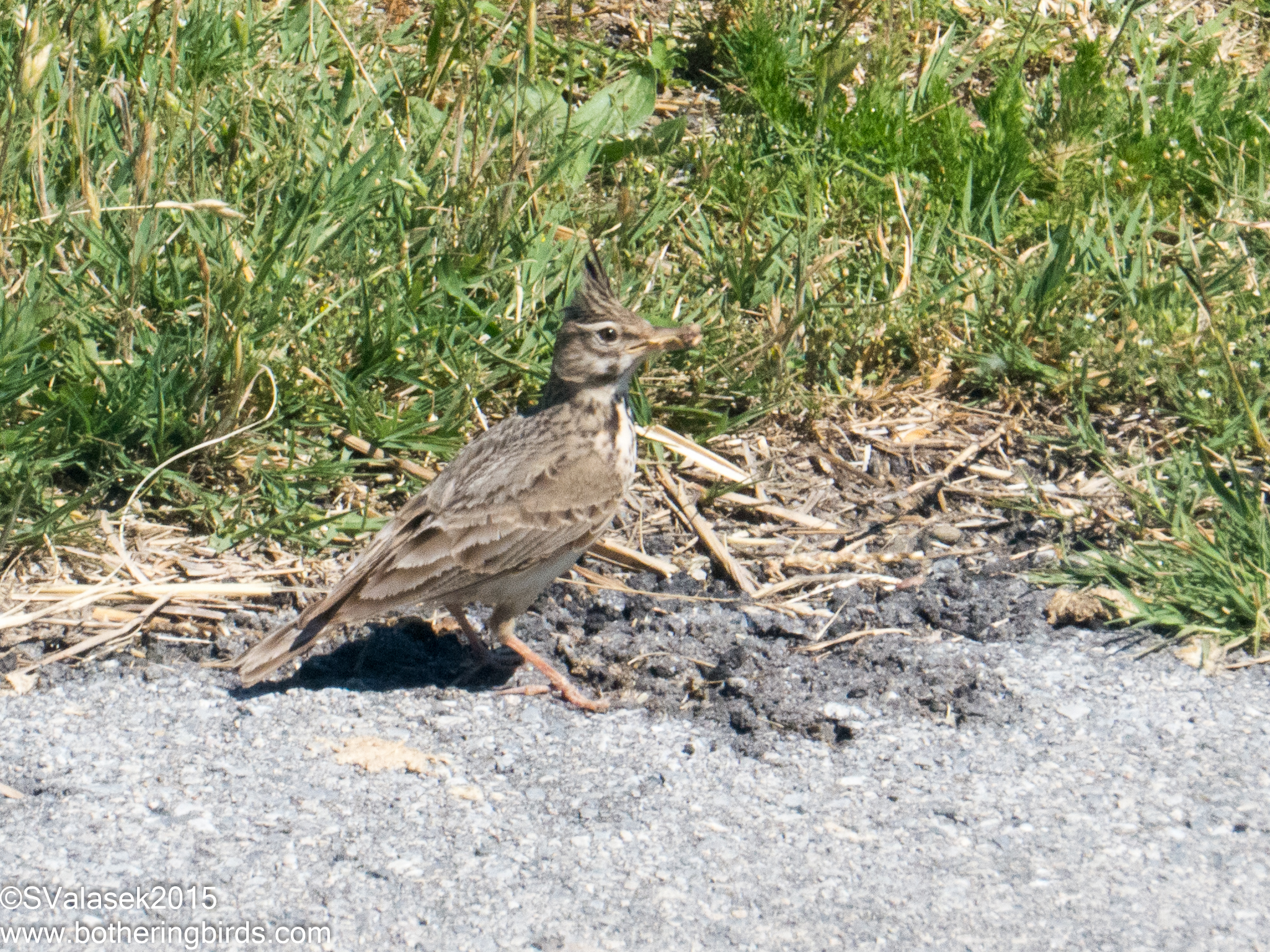 |
| Crested Lark - Zicklacke, Austria |
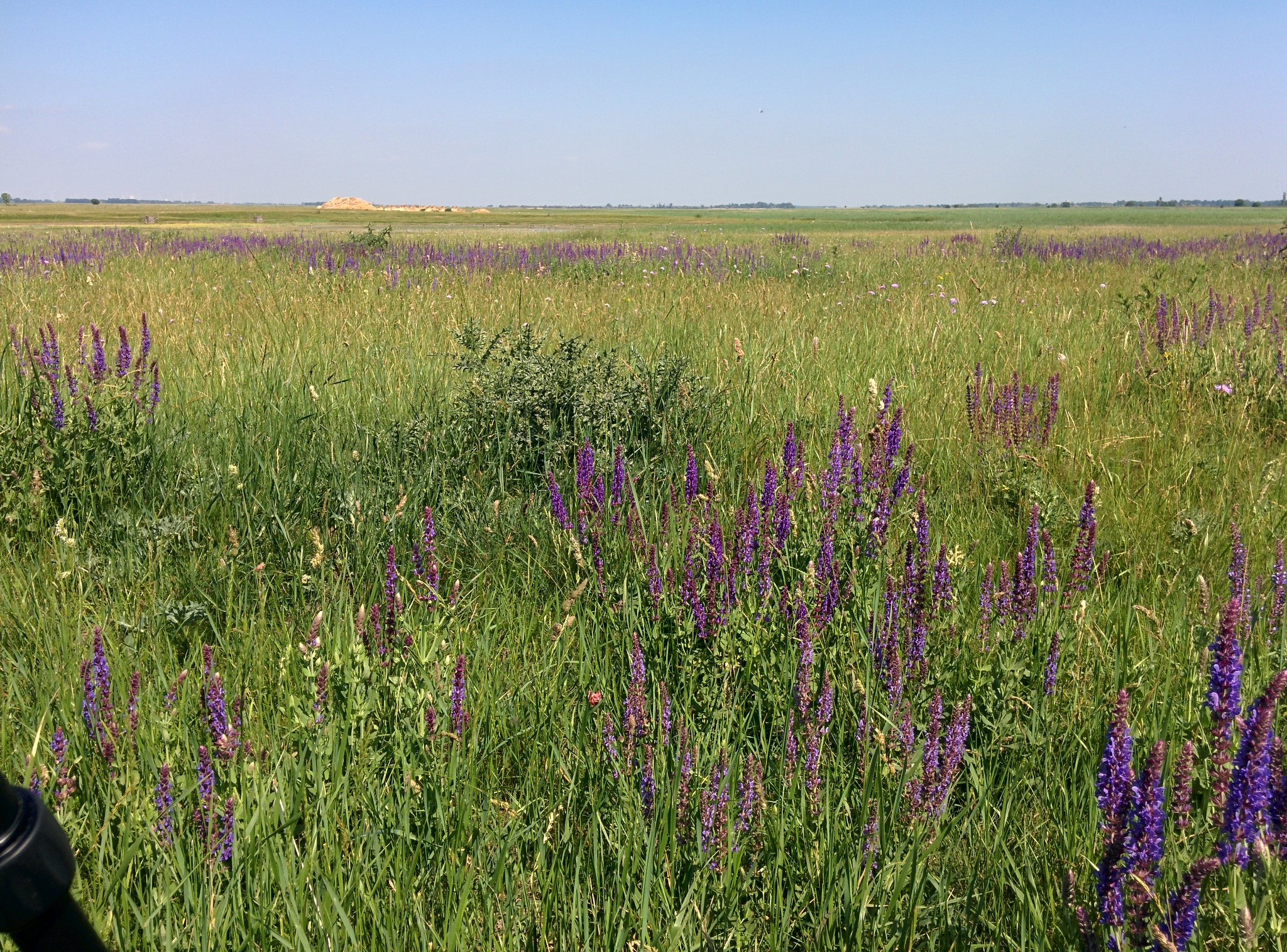 |
| Lange Lacke Meadows - Gemeinde Apetlon, Austria |
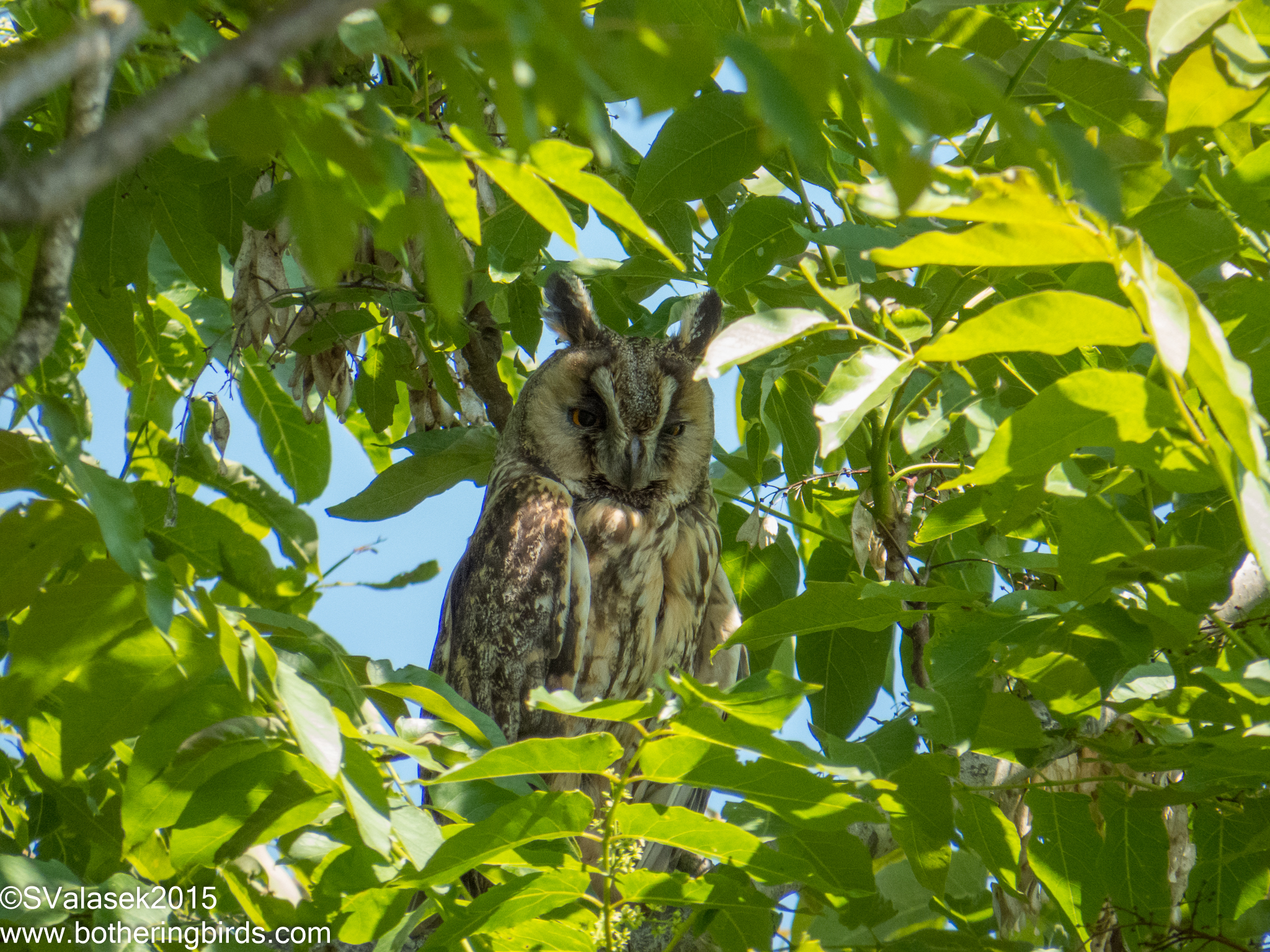 |
| Long-Eared Owl - Lange Lacke, Austria |
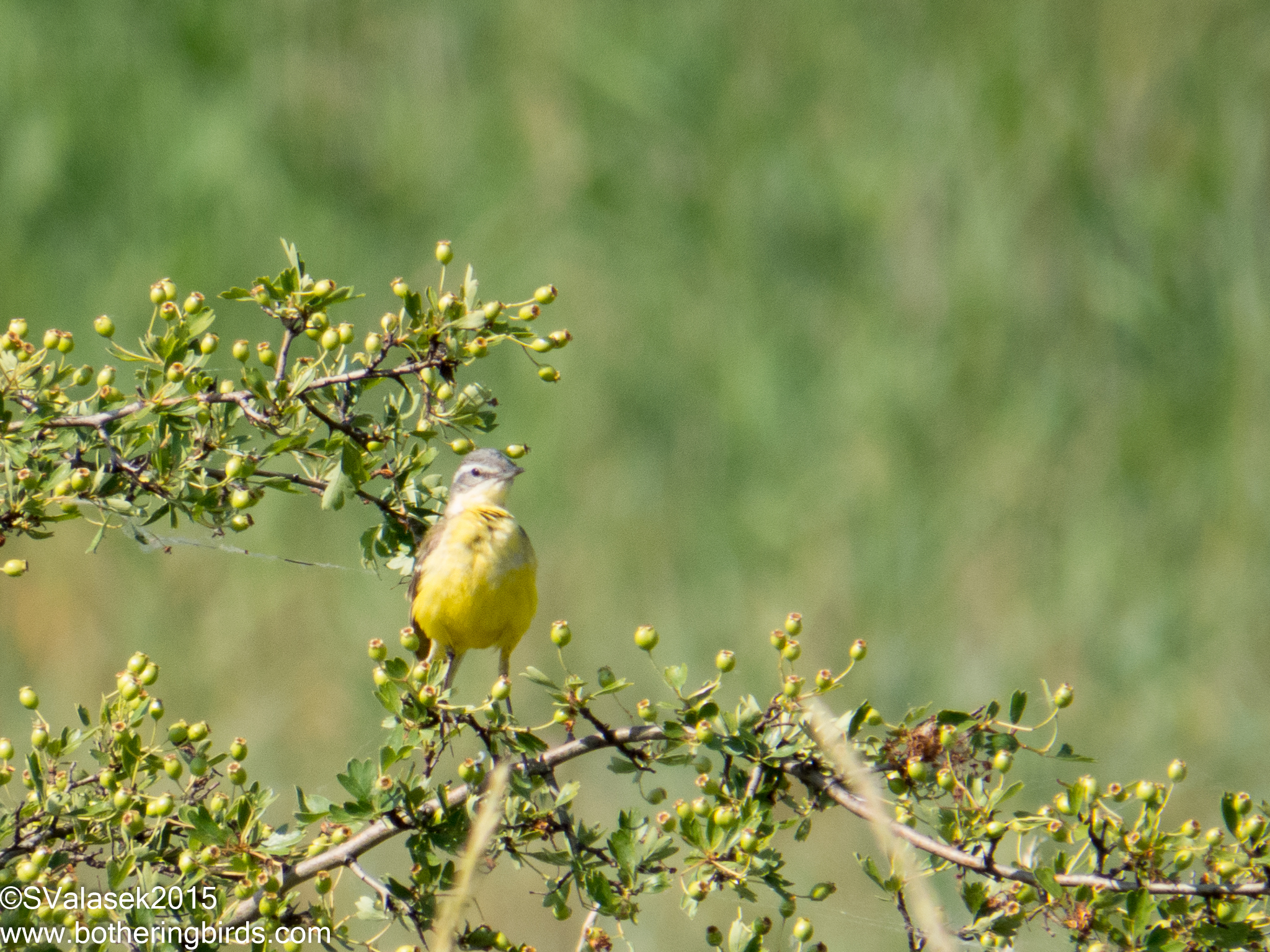 |
| Western Yellow Wagtail - Lange Lacke, Austria |
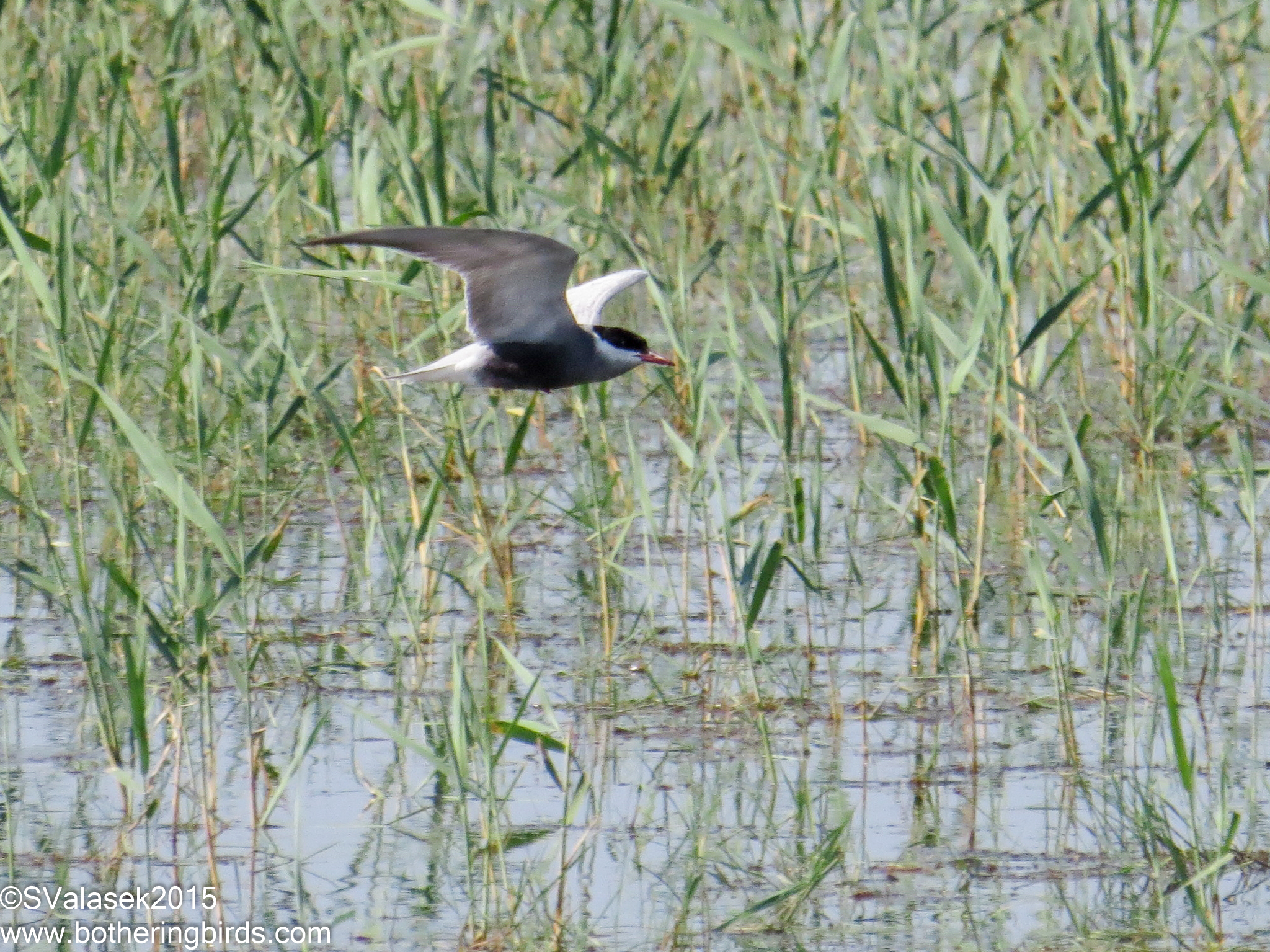 |
| Whiskered Tern - Lange Lacke, Austria |
Day 5 would take us to my ancestral homeland of Slovakia, which I'll write about in the next post. Thanks for making it this far,
Cheers



